It seems we can’t find what you’re looking for. Perhaps searching can help.
Sign Up for newsletter!
Subscribe to get the latest eBook!
Hotline






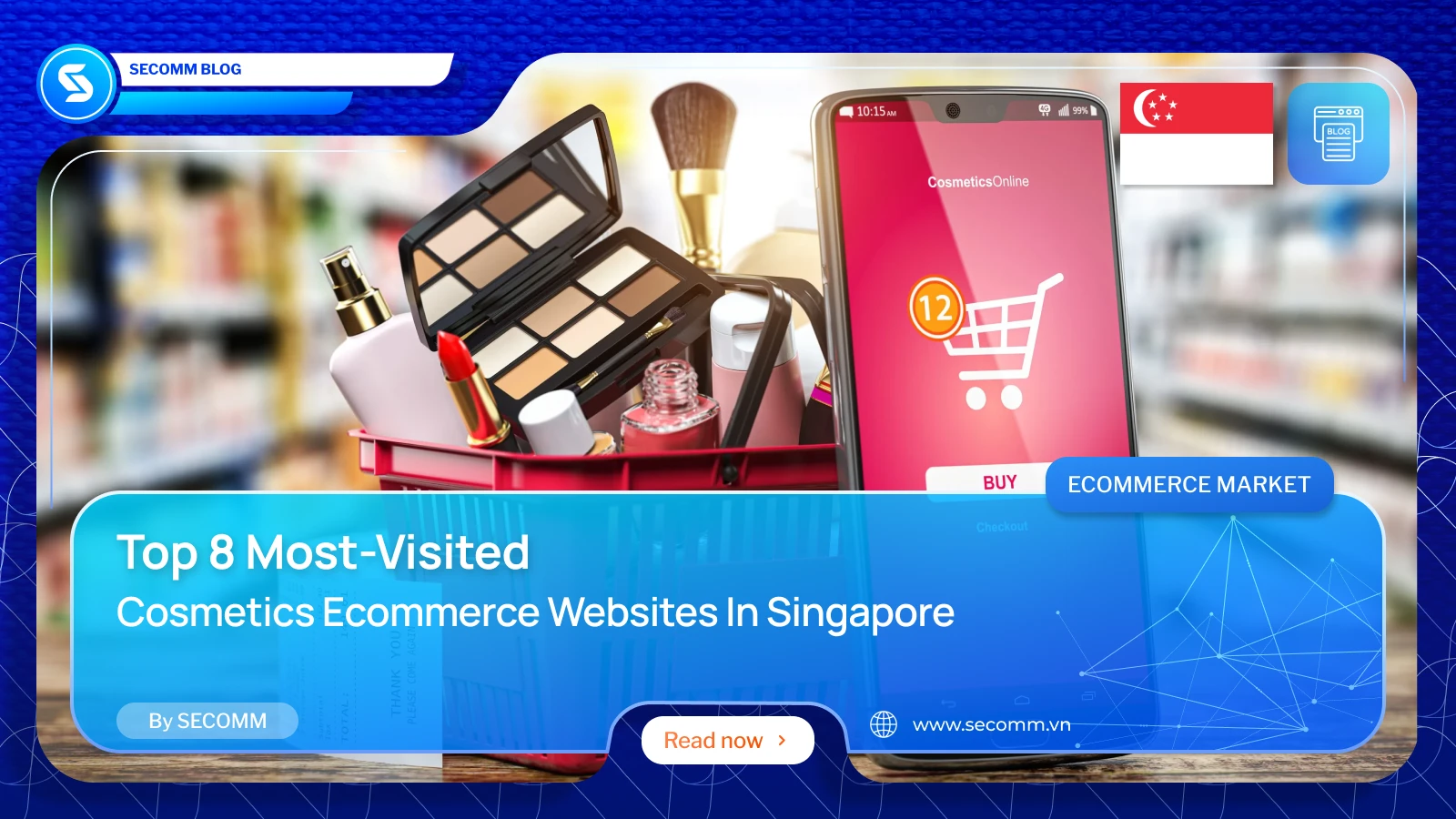
The cosmetics eCommerce industry in Singapore is witnessing explosive growth and continuous innovation, becoming one of the most promising and dynamic markets in the Southeast Asia region. With the increasing demand for beauty and personal care products from consumers, coupled with support from advanced technology and digital infrastructure, online cosmetics businesses in Singapore have been seizing opportunities to expand market share and enhance customer experiences.
Below are cosmetics 8 eCommerce websites trusted by Singaporean consumers for shopping.

The cosmetics and healthcare retail chain Watsons has gained fame across Asia, and Singapore is no exception. As a member of the A.S. Watson Group, Watsons has solidified its position with thousands of stores worldwide and a robust eCommerce website.
Watsons Singapore is renowned for its extensive product portfolio, ranging from cosmetics and skincare to haircare and healthcare products. The eCommerce website of Watsons Singapore is built on the SAP Commerce Cloud platform, providing customers with a smooth and diverse shopping experience. Search, product filtering, and cart features are optimized and customized, while encouraging customers to create accounts to enjoy exclusive benefits. This helps track and measure customer behavior on the website, leading to the most effective sales and marketing strategies.

Guardian is a retail chain specializing in healthcare, cosmetics, and other consumer products. Guardian has a presence in many countries and regions worldwide, including Singapore, offering a range of products from renowned and reliable brands.
The eCommerce website of Guardian is built on the SAP Commerce Cloud platform, providing many useful features for users. Customers can easily search for and purchase products, manage their shopping carts, and make convenient payments. Additionally, the website offers promotions and online support services to help customers have a comfortable and secure online shopping experience. Furthermore, customers can also review and provide feedback on products, providing useful information for other users.
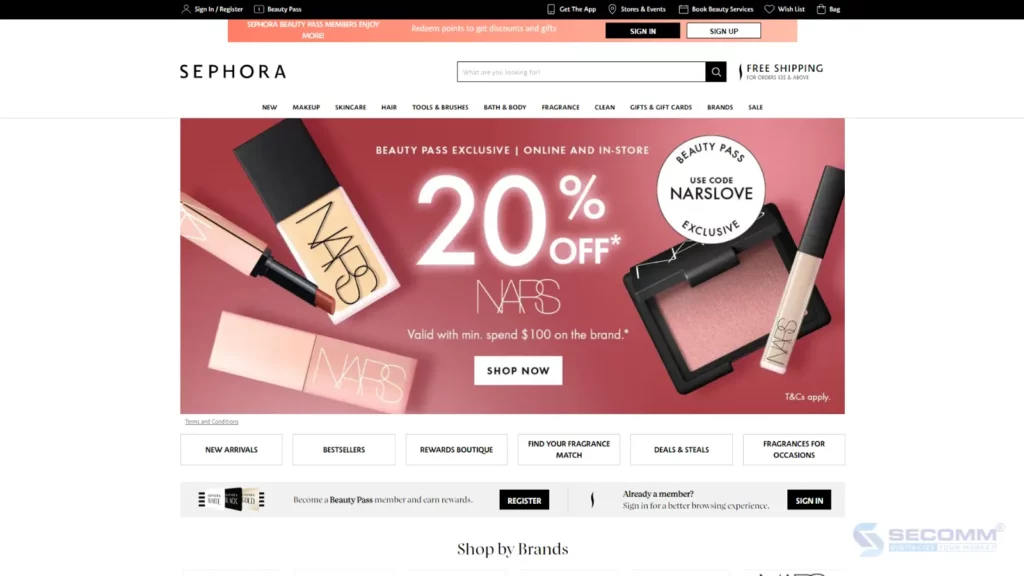
Similar to Guardian, Sephora is a global retail chain specializing in cosmetics and beauty, known for offering a variety of beauty products from leading brands worldwide. Currently, Sephora has a presence in the Singapore market with physical stores in major shopping centers and an eCommerce system, including a website and app for customers. Sephora is loved for its product diversity, customer care services, and innovation in the online cosmetics shopping experience.
Sephora’s eCommerce system in Singapore is built on Vue.js and Nuxt.js programming languages. With this system, Sephora’s customers can quickly search for and explore products through smart search bars and diverse filters. The online shopping experience is optimized with detailed product information, crisp images, and customer reviews.
The Sephora app is also highly regarded, making shopping easier for customers with features like “Virtual Artist” and receiving notifications about promotions. Overall, Sephora provides a range of features and services to meet customers’ cosmetics shopping needs, creating a professional and convenient online shopping experience.
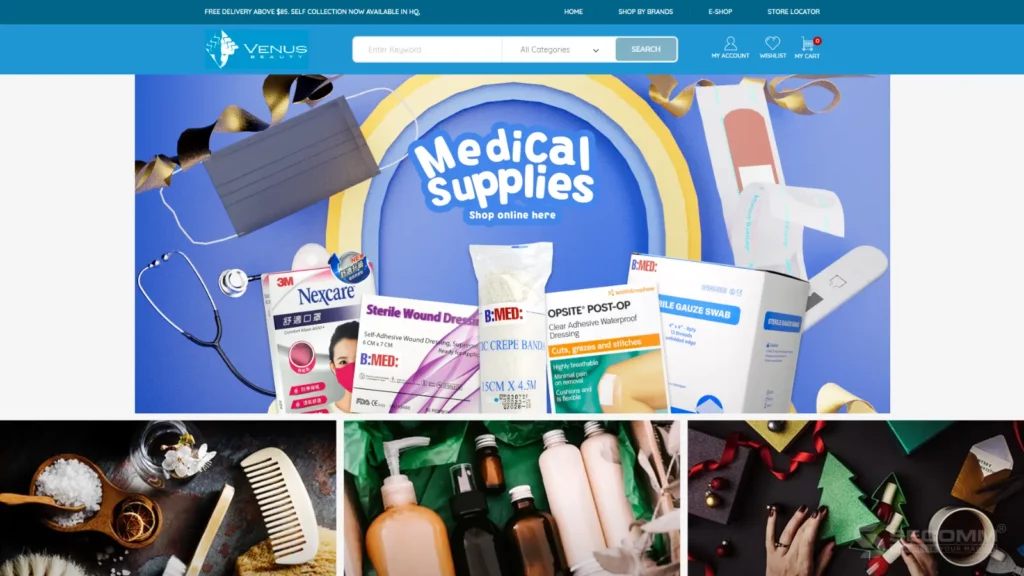
Venus Beauty is one of the retail chains for cosmetics and personal care present in most shopping centers across Singapore, beloved for its product diversity and quality. Since its establishment in 2002, Venus Beauty has continuously grown and expanded, becoming a familiar destination for many local consumers.
The eCommerce website of Venus Beauty is built and developed on the Magento platform, with superior customization and scalability. Customers can easily search for and purchase products thanks to the intuitive and user-friendly website interface. Venus Beauty also regularly offers attractive promotional programs to attract customers to shop more on the website and app.
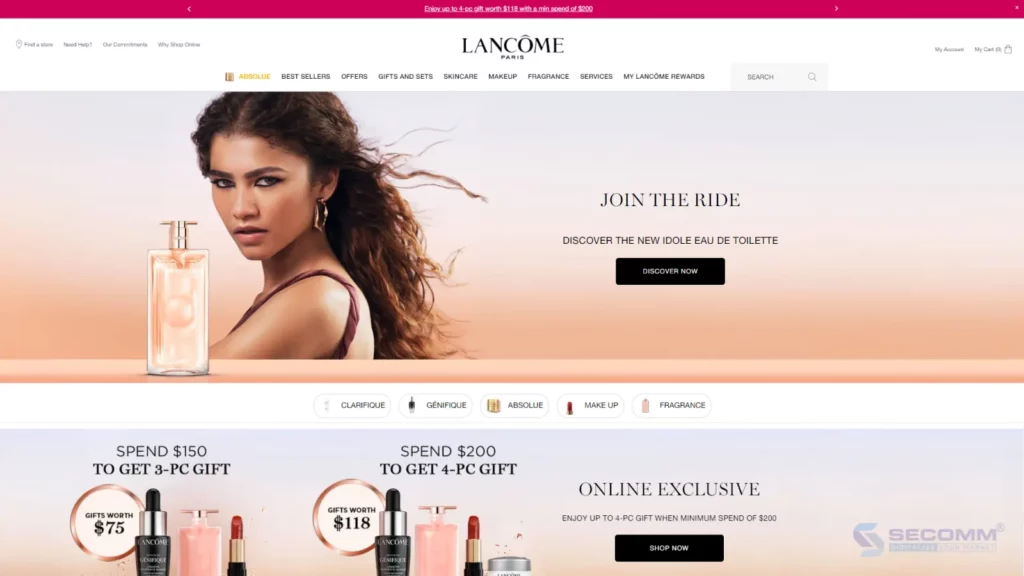
Lancôme Singapore is the branch of the renowned cosmetics brand Lancôme, part of the globally famous L’Oréal Group. Lancôme is known for its high-quality skincare products, makeup, and fragrances, always endorsed by beauty experts and celebrities. In Singapore, Lancôme not only offers premium products suitable for various skin types but also provides optimal online shopping experiences for customers.
The Lancôme website is developed on the Salesforce Commerce Cloud infrastructure with a user-friendly interface, allowing customers to browse, search, view products, and make purchases easily and quickly. The website also integrates AR technology to provide a “Virtual Try-On” experience, allowing customers to try on lipsticks, eyeshadows, and other products realistically before making purchasing decisions.

Cocomo is an eCommerce website specializing in beauty and personal care products from Korean brands. Cocomo boasts a rich product portfolio, including cosmetics, skincare products, haircare, and various other beauty items, catering to all customer beauty needs.
The Shopify website of Cocomo Singapore is designed with a clear, intuitive interface, making it easy for users to search for and select products. Product categories are organized logically, along with efficient search tools, making shopping quick and convenient. Cocomo frequently offers promotions, discounts, and special deals, helping customers save money. These promotional offers are regularly updated and can be easily found on the homepage or product category pages.

In Singapore, the skincare brand Paula’s Choice is just as renowned as in other markets. Founded by skincare expert Paula Begoun, the brand is famous for its science-backed skincare products, known to be safe and effective, free from harmful ingredients like fragrances or dyes.
Paula’s Choice eCommerce website is built on Shopify Plus. The website offers a range of skincare products, including cleansers, toners, serums, moisturizers, sunscreens, and specialized treatments like BHA, AHA, and retinol. These products cater to all skin types, from oily, dry, sensitive, acne-prone to aging skin. Each product on the website comes with detailed descriptions of ingredients, usage instructions, benefits, and supporting scientific research.
Paula’s Choice Singapore regularly runs discount programs, bundled gifts, and special offers for customers. Additionally, customers can easily access support from the customer service team via hotline, email, or live chat.
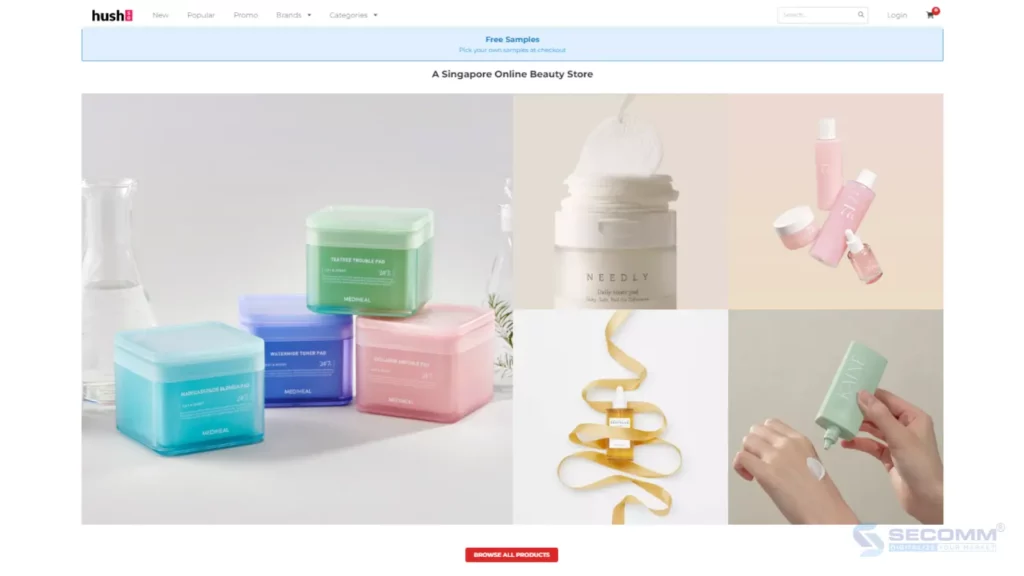
Hush is a familiar destination for Singaporean consumers when they need to shop for cosmetics online. This retail giant specializes in providing beauty and personal care products from various leading brands worldwide such as Laneige, Aveeno, Bioderma, CeraVe, and more.
The Hush website is designed to be simple, modern, and user-friendly. Customers can easily search and browse through products thanks to clear categories and efficient search tools. Additionally, customers can make payments by registering an account or as a guest. Hush also offers fast and free delivery services, allowing customers to track their orders and estimated delivery times.
Lời kết
In summary, the cosmetics eCommerce industry in Singapore has seen significant growth over the years with the presence of many reputable and well-known names. From international brands like Watsons, Lancôme, and Paula’s Choice to local eCommerce platforms like Cocomo and Hush, consumers have countless options to search for and purchase high-quality beauty and personal care products. Each website offers unique and convenient shopping experiences, catering to the increasingly diverse needs of customers.
Hopefully, the list above will help motivate many other beauty businesses to confidently build their own eCommerce websites.
Need more in-depth advice? Contact SECOMM today!
 2
2
 3,436
3,436
 0
0
 1
1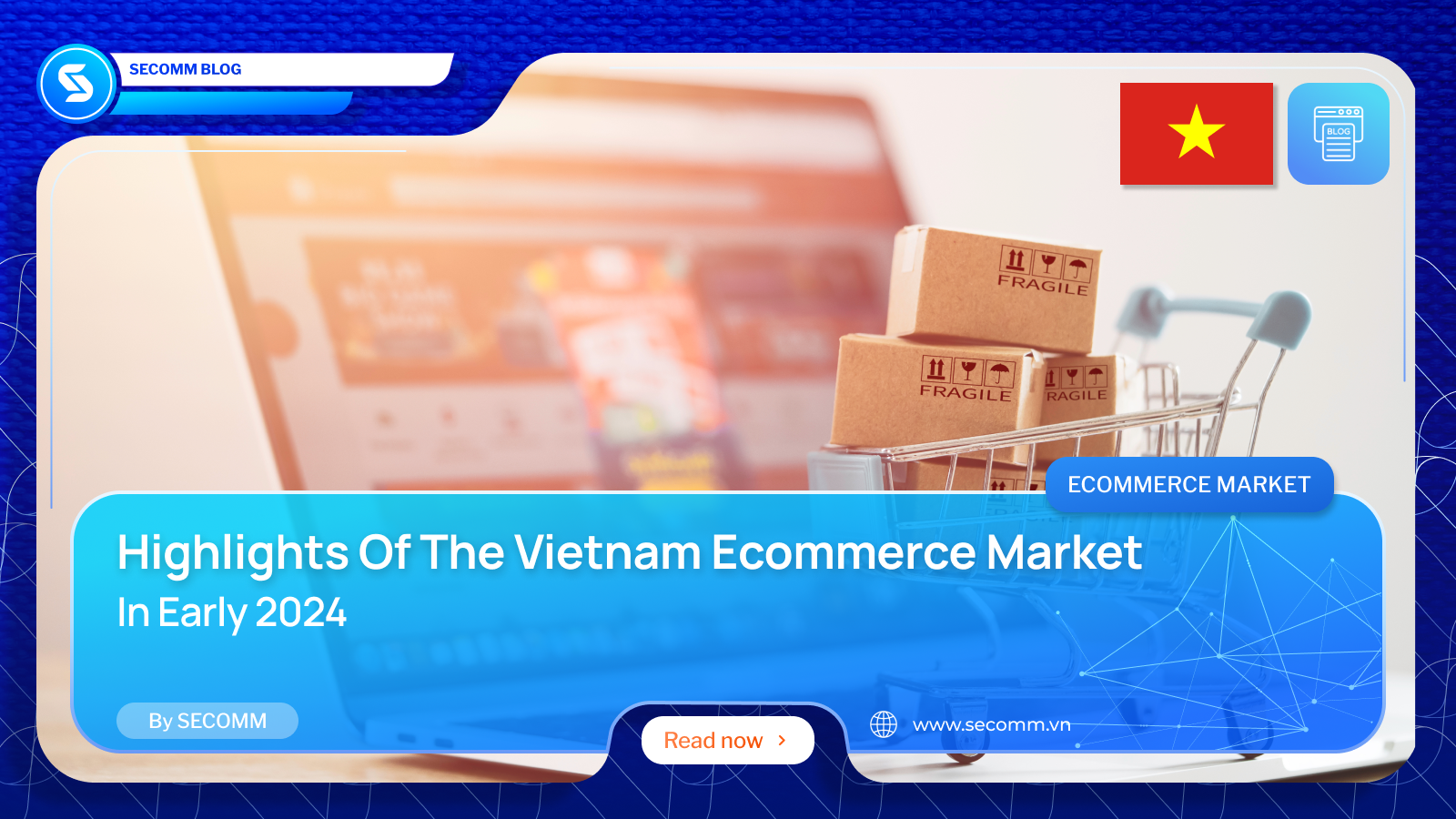
Despite the impact of inflation and economic recession on the Vietnamese economy, consumers are still willing to spend heavily on essential goods. As a temporary solution, they are turning to online shopping channels as one of the ways to deal with rising prices.
In the first two quarters of 2024, the eCommerce market in Vietnam has seen many significant fluctuations with Livestream and Short-video still maintaining their heat as evidenced by the fact that not only TikTok but also the eCommerce giant Shopee is investing heavily in video content. Let’s take a look at some of the highlights of the first few months of the year with SECOMM.
Vietnam is becoming a fertile market for eCommerce development as the demand for online shopping continues to grow. It is forecast that by 2025, eCommerce (B2B, B2C) will reach approximately $24 billion with a CAGR of 22%.
According to statistics from NIQ, there are about 60 million people nationwide using online shopping systems with an average of 3.5 million daily visits to eCommerce sites.
Among eCommerce platforms, TikTok Shop is expected to continue to grow strongly in the coming time. In the first quarter of 2024, this platform’s revenue increased by more than 239% compared to the same period last year, while Lazada showed signs of a slight decrease. Shopee is still holding the upper hand and always outperforms TikTok Shop and Lazada.
A notable point in the consumer behavior of Vietnamese shoppers is that they tend to focus on social factors (social-oriented), which means that they are interested in how products are being evaluated and promoted on communities and social networks, and from there, make purchasing decisions.
Currently, up to 90% of users intend to maintain or even increase their online shopping frequency on eCommerce platforms in the next year.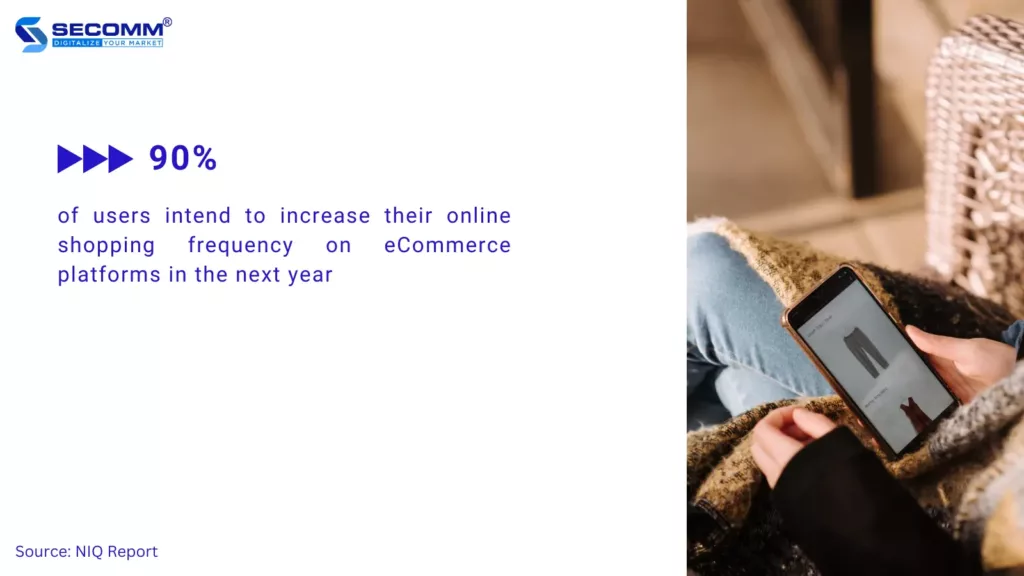
Research indicates that while price reductions and special deals are influential, they only explain 90% of consumer shopping patterns. The convenience factors offered by eCommerce, which simplifies shopping to a few quick actions on mobile devices, actually play a slightly larger role, influencing 92% of consumer choices.
This serves as a reminder for companies to prioritize their eCommerce website’s quality to enhance user experience. For instance, Vinamilk has recently revamped its brand identity and collaborated with SECOMM to refine its online system through eCommerce development services.
The Story of Vinamilk: Vinamilk & The Unprecedented Shift Using Shopify Plus
In a certain survey, only 55% of shoppers chose the shopping experience as a key determinant in their online purchasing decisions. With after-sales services such as easy returns or 24/7 customer care, sellers can easily leverage available resources to enhance the customer’s shopping experience.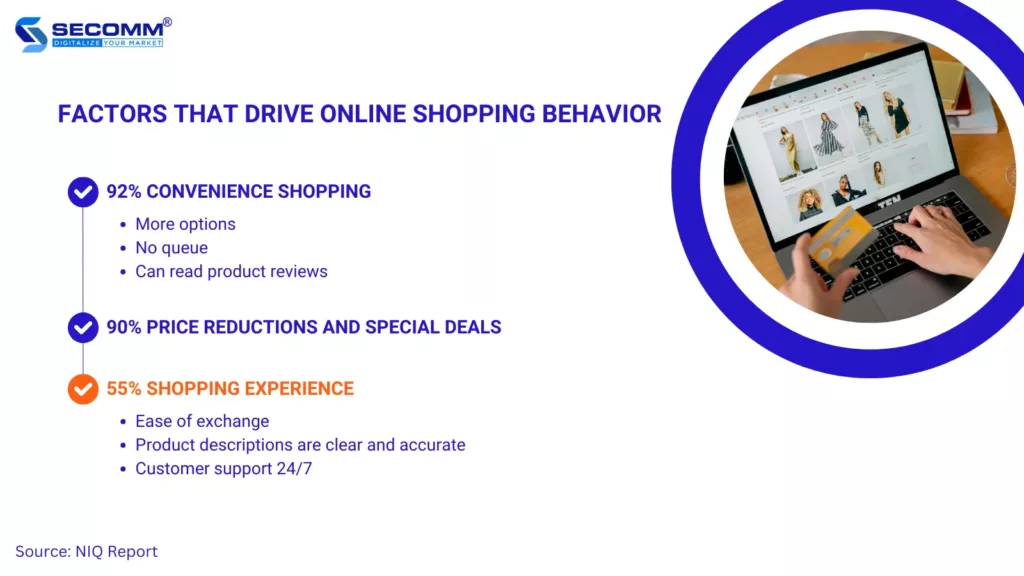
According to research from NIQ, on average, a shopper uses 3.1 different platforms within three months instead of being loyal to just one specific platform. Therefore, sellers should strengthen their presence across multiple platforms.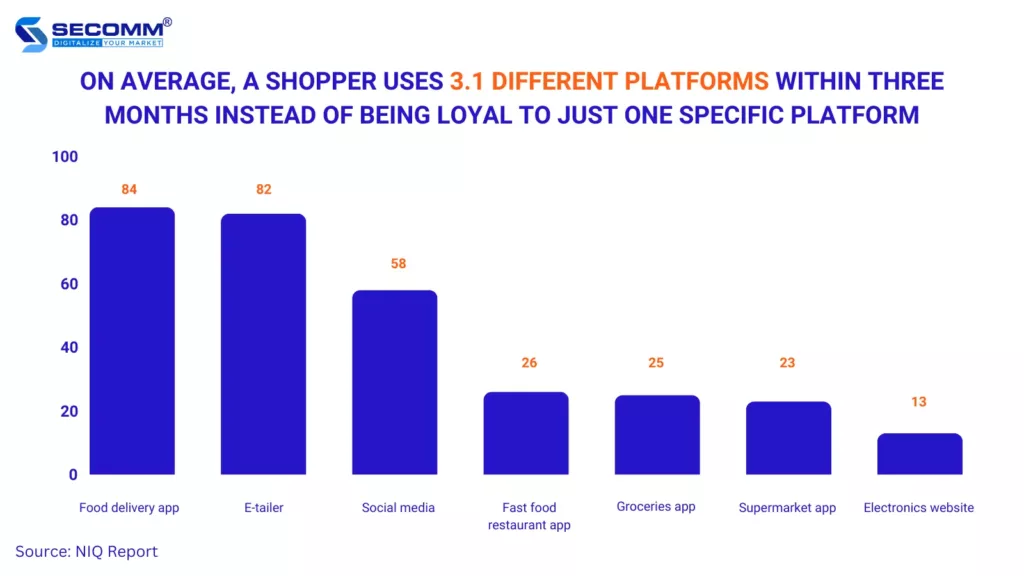
Currently, the trend of ‘Shoppertainment’ remains prevalent, with over 79% of TikTok users making purchases influenced by seller content rather than sales promotions. 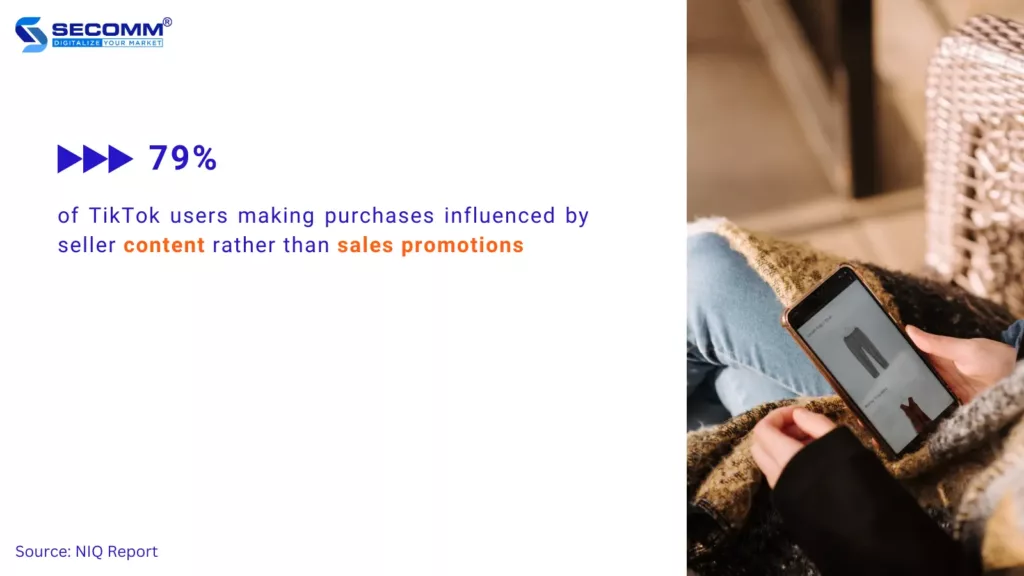
On TikTok, content creation is crucial for merchants to maintain customer engagement and push buying decisions. Ms. Trang Pham, Channel Partner Director at TikTok Vietnam, emphasizes the importance of diversity in advertising and content strategies. She warns that a lack of variety can lead to viewer fatigue.
Consequently, sellers need to understand their customer groups well to create the most suitable content for each group, limit inappropriate content, and utilize cost.
Traditional shopping methods like browsing social media or eCommerce websites are becoming less attractive. Livestreaming, however, stands out as a dynamic way to shop online.
In Q1 2024, 95% of online shoppers made purchases through livestreaming, dedicating an average of 13 hours per week watching livestreams. Statistics reveal that 85% of users prefer livestreaming because it allows direct interaction with sellers, while 81% appreciate the ability to view products in greater detail. Notably, livestreaming can drive 64% of users to purchase unintentionally.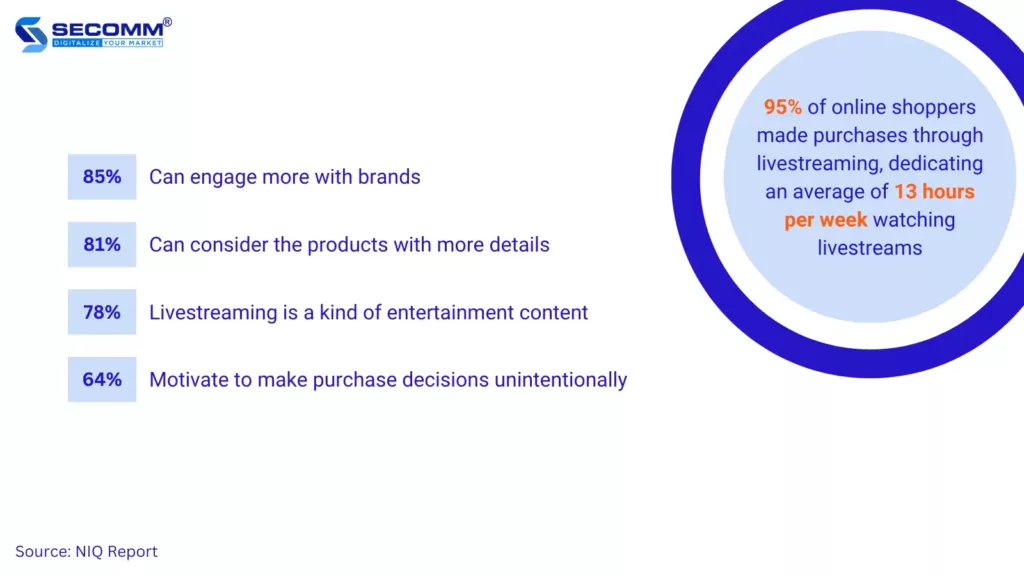
The rise of livestreaming has expanded the influence of content creators and social media influencers. Sellers can leverage these resources to build real connections with consumers. According to NIQ, approximately 50% of consumers are influenced by KOCs/KOLs when making purchasing decisions, with the personal care industry being the most impacted, as 60% of buyers in this category have changed their consumption habits.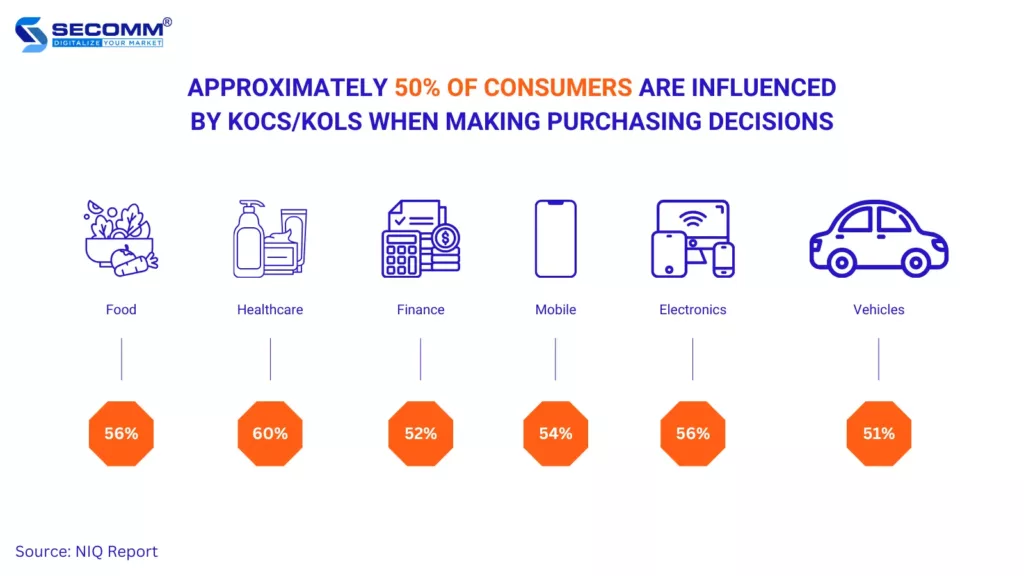
Influencers and KOCs/KOLs are valued for their trust and realness. Their shared content and insights are key in guiding customers’ buying choices. With more influencers emerging, it’s the quality of their content and real-world knowledge that helps shoppers confidently choose trusted brands online.
Online shopping platforms are advancing rapidly, focusing on innovation that puts customers first. For large businesses, along with building brand awareness, improving online stores should always be kept in mind. SECOMM is ready to help companies upgrade their eCommerce platform. Contact SECOMM for a free, detailed consultation.
 2
2
 4,533
4,533
 0
0
 2
2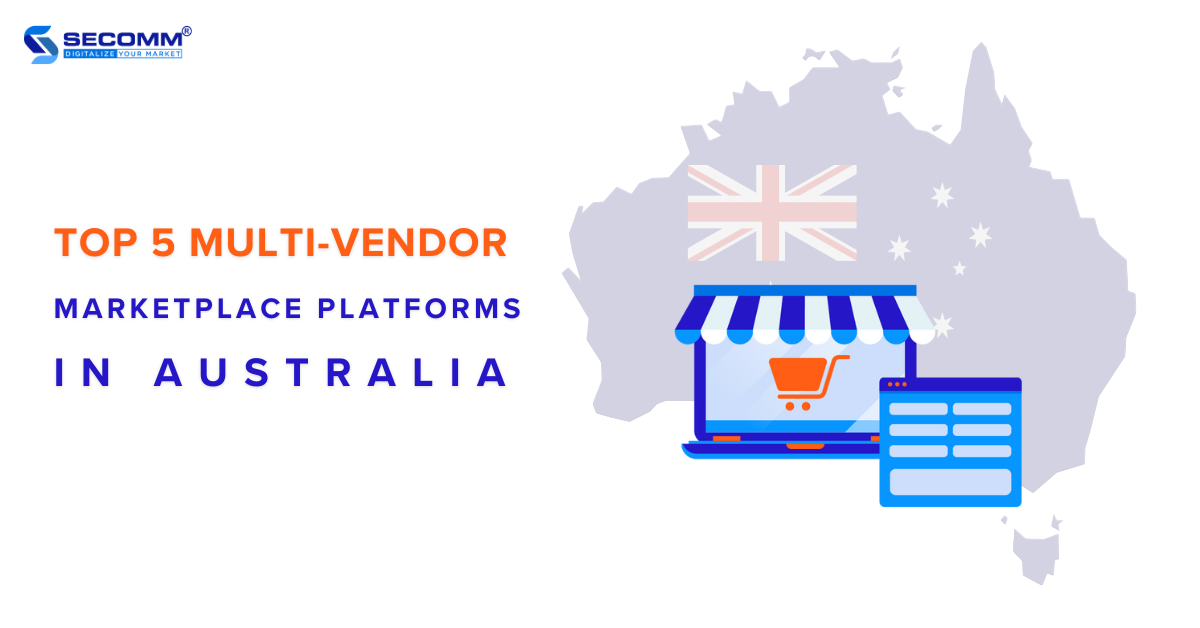
The demand for shopping on multi-vendor marketplaces has been rising in Australia recently, particularly since the Covid-19 pandemic.
Data from Statista, up to December 2023, reveals the leading players in the Australian multi-vendor marketplace market, measured by average monthly visits. This includes international giants like Amazon and eBay and local brands such as Kmart and Coles.
Therefore, other Australian businesses still have ample opportunities to join the eCommerce landscape. The critical initial step is to choose the right platform to build an online marketplace that suits the specific business needs.
Here 5 popular choices of many Australian eCommerce businesses.
Learn more: 14 must-have features to build your online marketplace
Marketplacer is a Software as a Service (SaaS) platform that allows you to create your multi-vendor marketplace by integrating with existing eCommerce systems like Adobe Commerce, BigCommerce, Salesforce Commerce Cloud, and commercetools.
You can also build the Headless eCommerce marketplace by integrating custom frontends into Marketplacer’s backend through APIs. This gives you complete control over the user experience and the optimized platform operation.
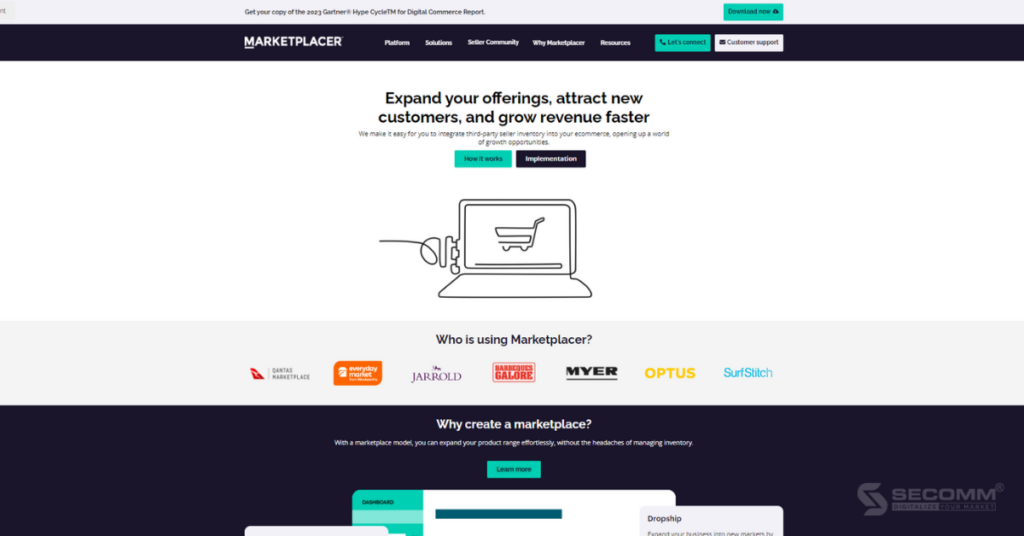
Pros:
Cons:
Top features:
Price: Pricing may vary based on specific requirements
Learn more: Build your first online marketplace with the Marketplacer platform
Magento 2 is a widely used eCommerce platform globally, known for its flexibility and superior scalability. The platform offers you the Multi-Vendor Marketplace Extension, allowing you to build your online marketplace with the Magento framework.
Using this extension, you can convert your Magento eCommerce website into a feature-rich marketplace like Amazon and eBay.
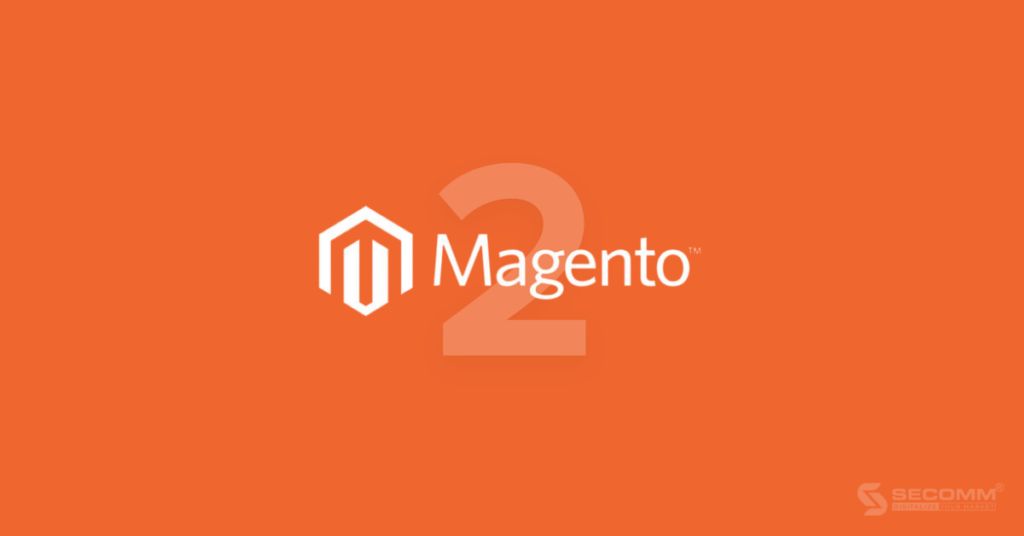
Pros:
Cons:
Top features:
Price: Pricing may vary based on specific requirements
Learn more: Magento 1 vs Magento 2: Full Comparison
Yo!Kart is a leading self-hosted eCommerce solution that you can consider for building a customized online marketplace. Yo!Kart is designed to be user-friendly
prominent that businesses can consider for building a customized online marketplace. Designed to be user-friendly, Yo!Kart allows businesses complete control, customization, and flexible scale to manage and operate their eCommerce marketplace efficiently.
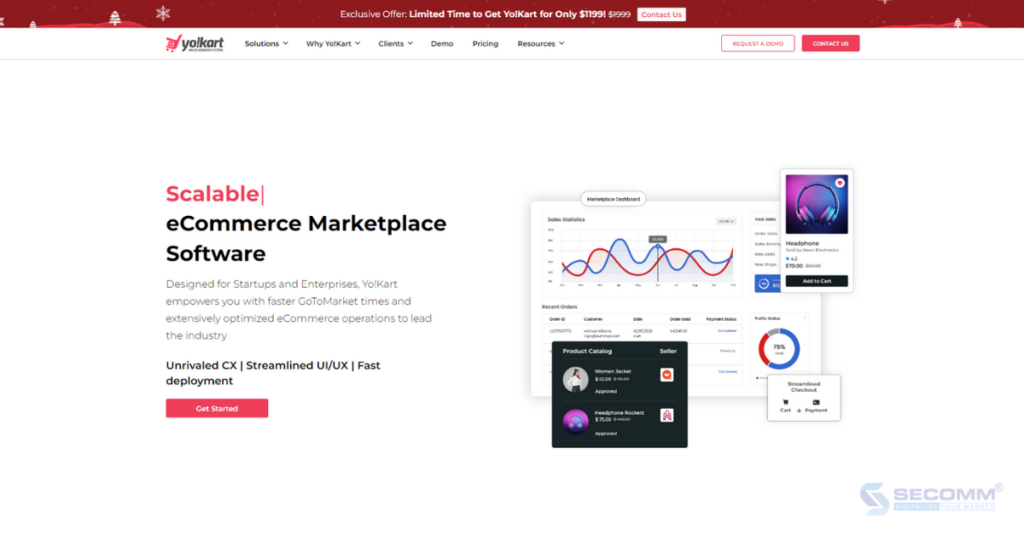
Pros:
Cons:
Top features:
Price: Starting from $1099/year. However, costs may vary based on specific requirements.
CedCommerce is a platform that helps you expand your online operations by creating a feature-rich eCommerce marketplace. With CedCommerce, you can easily manage multiple vendors and provide them with a robust platform to sell their products.
One key feature of CedCommerce is its ability to integrate with various eCommerce platforms such as Magento, Shopify, BigCommerce, WooCommerce, etc. CedCommerce, with its high flexibility, offers you many customization options, including the ability to customize vendor onboarding processes, commission rates, shipping rates, and more.
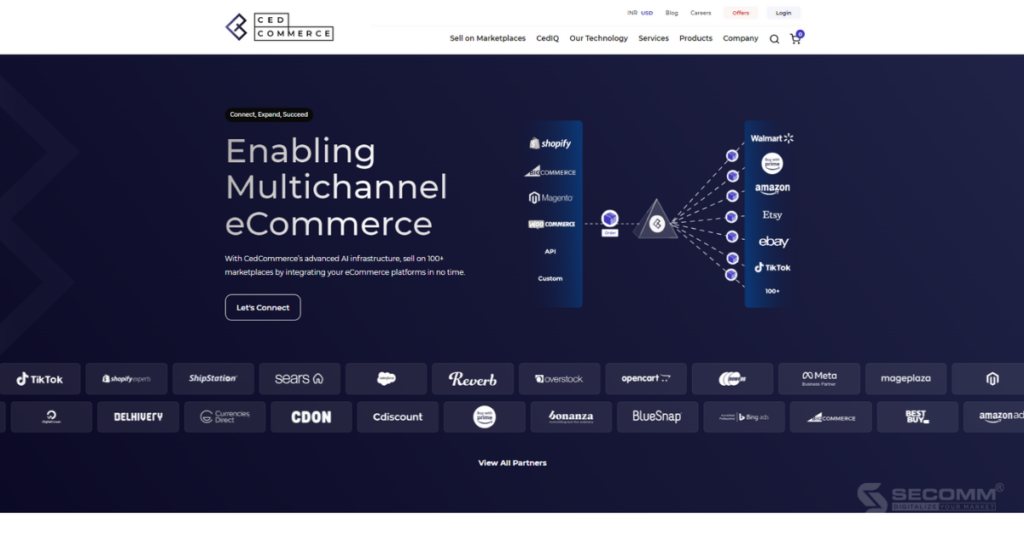
Pros:
Cons:
Top features:
Price: The fees aren’t public and will vary based on specific requirement
CS-Cart Multi-Vendor is known as a specialized platform for building online marketplaces with superior customizability and scalability. Integrated with over 26 languages and featuring unique functionalities, this all-in-one solution is suitable for various industries and deployment needs.
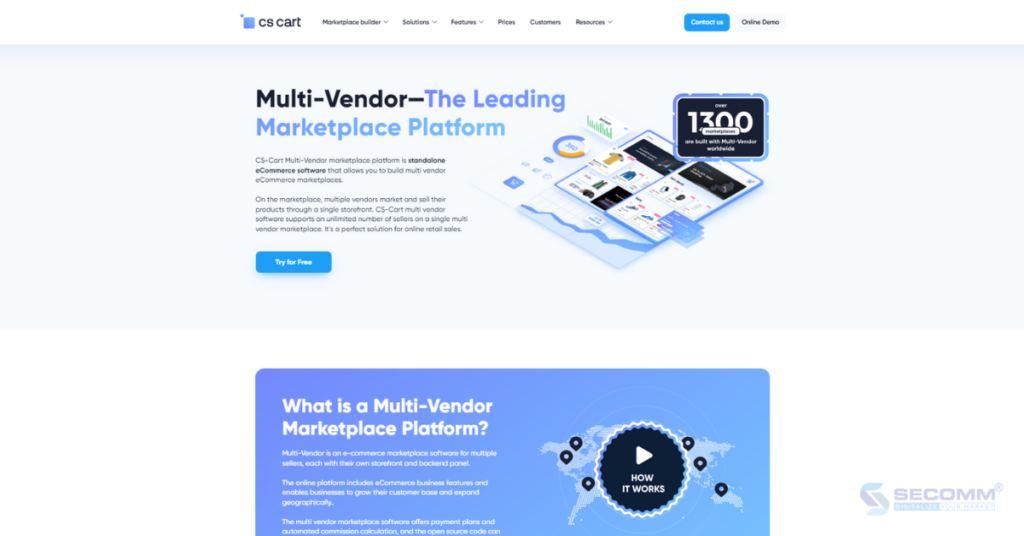
Pros:
Cons:
Top features:
Price: Pricing may vary depending on specific needs.
Build Your First Multi-Vendor Marketplace Platform Today!
Here are 5 platforms widely used by Australian businesses to build flexible, feature-rich, and optimized custom online marketplaces. With experience in deploying numerous multi-vendor marketplace projects for Australian clients such as Laybyland, Seconds Deals, etc., SECOMM has a team of highly skilled technical experts with a deep understanding of the Australian market.
If you’re ready to build an eCommerce marketplace, contact SECOMM or call (+84)28 7108 9908 today for a free consultation!
 2
2
 4,809
4,809
 0
0
 1
1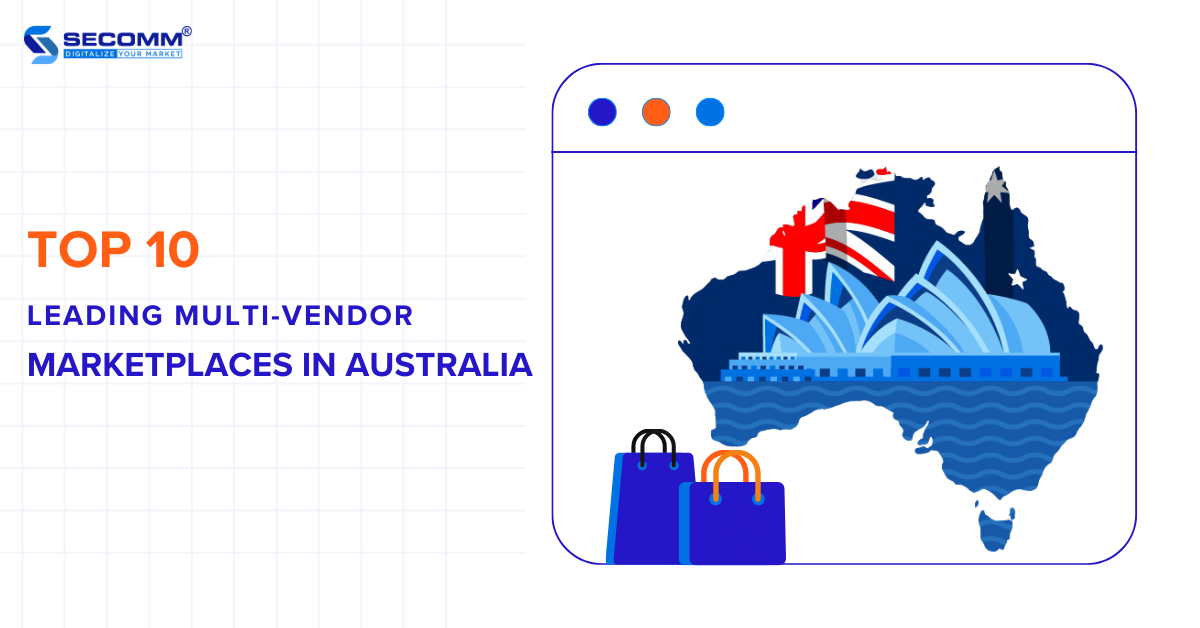
The eCommerce industry in Australia has experienced continual growth in recent years. Consumers are increasingly inclined to prioritize online shopping platforms for their diverse product offerings, convenience, and cost-effectiveness.
Here are 10 widely popular multi-vendor marketplaces that serve as favored shopping destinations for Australian consumers.
Learn more: Building your first multi-vendor marketplace with Marketplacer
In late 2017, Amazon officially launched its operations in Australia, marking the establishment of Amazon Australia. Much like in many other countries, Amazon Australia provides a diverse array of products, spanning fashion, electronics, home goods, books, toys, and electronic appliances sourced from various sellers.
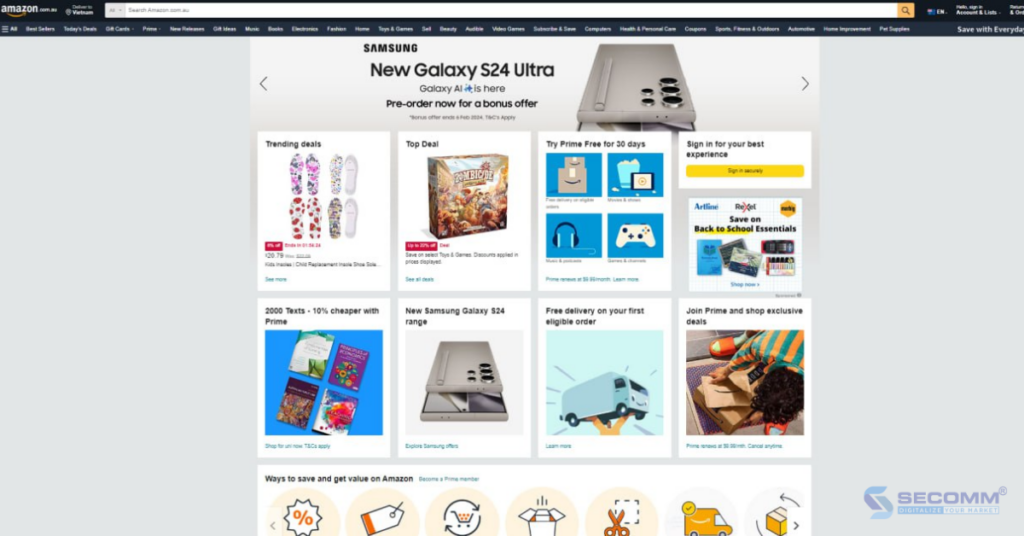
Beyond product sales, this retail behemoth also offers services such as Amazon Prime and Amazon Fresh, featuring expedited delivery policies and exclusive perks for members. Over the years, Amazon has solidified its position in the Australian eCommerce market, delivering a plethora of choices and a comprehensive online shopping experience for customers in the country.
Unlike Amazon, the retail giant eBay has been present in the Australian market since the early years of eBay’s global expansion. eBay has created an online marketplace that allows both individual sellers and businesses to sell their products. On this eCommerce platform, customers can find everything from fashion, electronics, and home goods to toys, decorations, and much more.
Currently, eBay is also a dominant player in the eCommerce market in the Australia and New Zealand region, alongside Amazon. This is due to offering customers an optimal shopping experience with various promotions and attractive deals throughout the year.
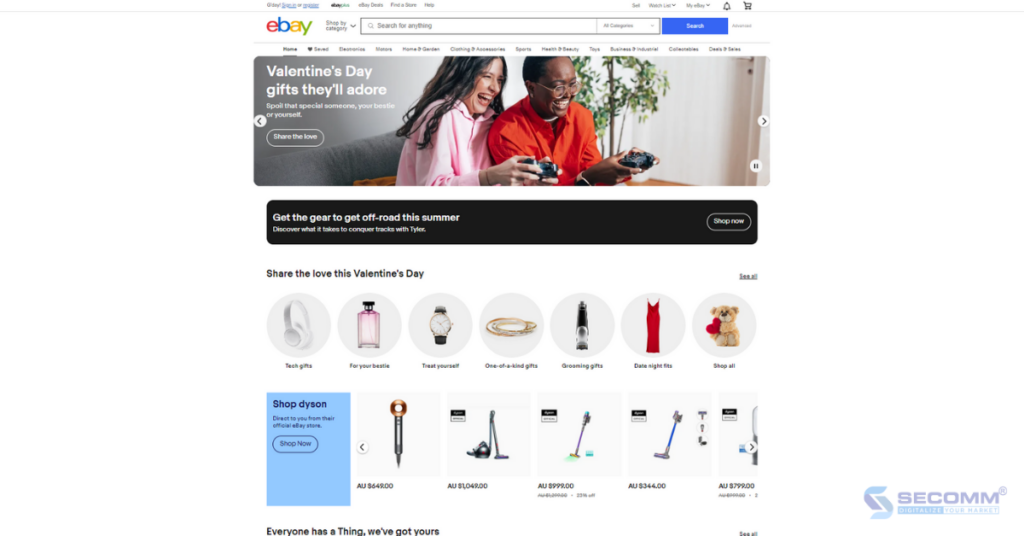
The Kmart multi-vendor marketplace started its operations in Australia in 1960 and has since evolved into one of the country’s most popular retail chains. The Kmart company is a part of the Wesfarmers group. The products offered by this Australian online marketplace are diverse, including electronics, household goods, furniture, cosmetics, and fashion.
Kmart is renowned for its cost-effective pricing strategy, making its products and services accessible and convenient for a diverse customer base. Alongside its website, Kmart provides a well-designed mobile app with features that facilitate convenient shopping for customers wherever and whenever they choose.
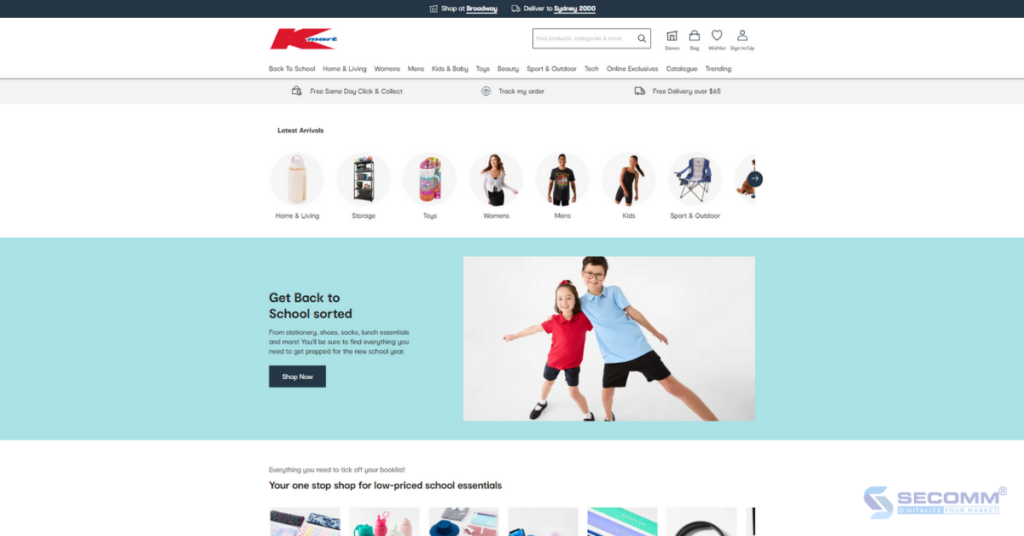
Myer has a long history, established in 1900 by Sidney Myer in Melbourne, Australia. Since then, Myer has grown into one of the major names in the retail industry in Australia. The Myer multi-vendor marketplace is built with modern technologies that make it easy to expand according to business needs. Additionally, advanced features can be developed and customized effectively to provide an exciting and optimal shopping experience for customers.
In addition to an extensive product portfolio, Myer has introduced a loyalty program called Myer One, allowing customers to collect points through shopping and redeem them for equivalent value rewards. This not only helps retain existing customers but also attracts more potential customers, making Myer one of the leading online marketplaces in the land Down Under.
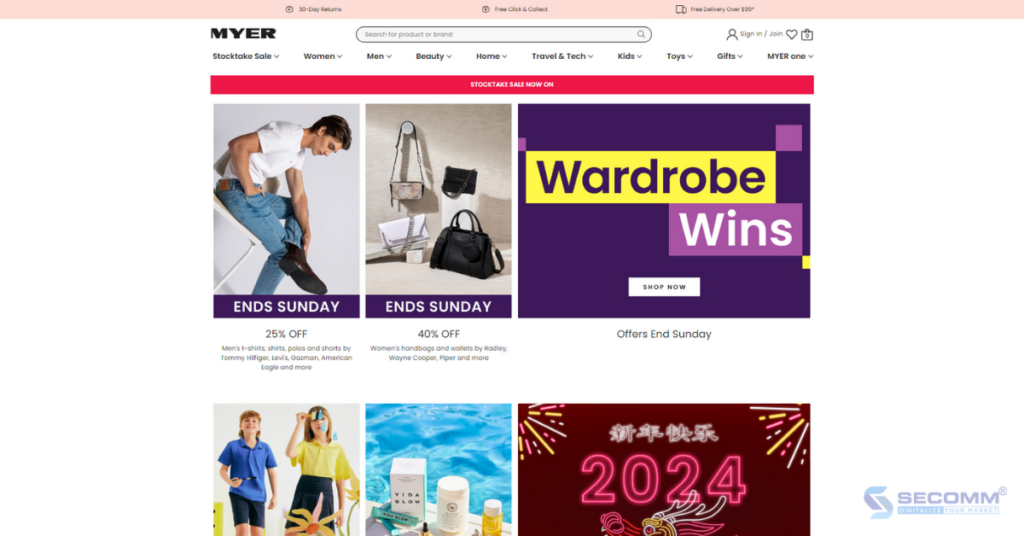
Big W is a part of the prominent retail group Wesfarmers, established in 1964. Over the years, Big W has evolved into one of Australia’s major and well-loved retail chains. In addition to showcasing products from renowned brands, Big W also offers a diverse range of in-house branded items, elevating its competitive edge and delivering significant value to customers.
Beyond its traditional brick-and-mortar stores scattered across Australia, Big W’s online marketplace features a user-friendly website and a mobile app for seamless online shopping at any time and from any location. Big W consistently rolls out enticing promotions and appealing deals, leveraging email marketing to engage with customers, ultimately driving up conversion rates and overall sales.
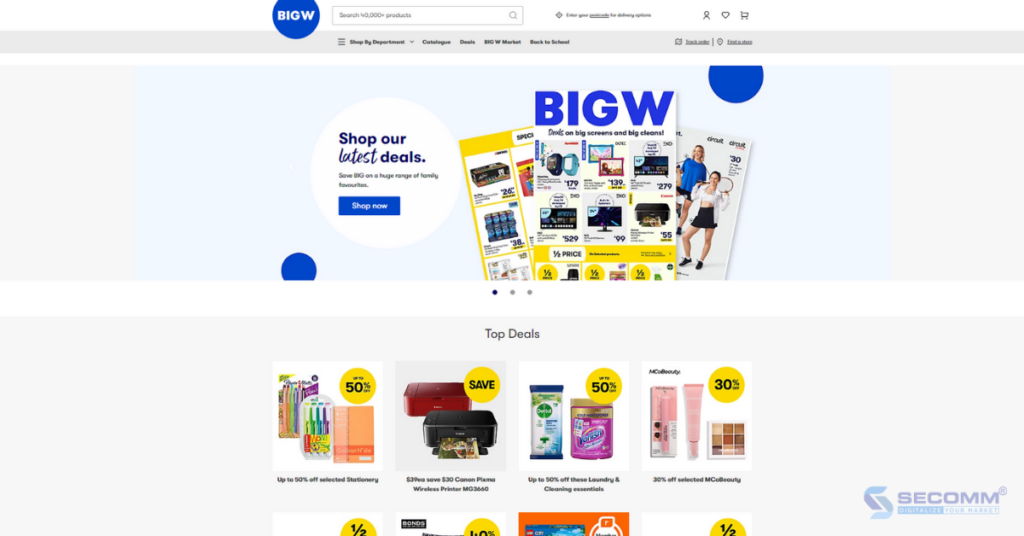
Target is known as the retail giant in the United States, specializing in providing products across various sectors. In the Australian market, Target is also popular and serves as a shopping destination for items such as fashion, furniture, gifts, and more.
Through monthly promotional programs and offers, Target has successfully attracted numerous new customers while maintaining relationships with its existing customer base.
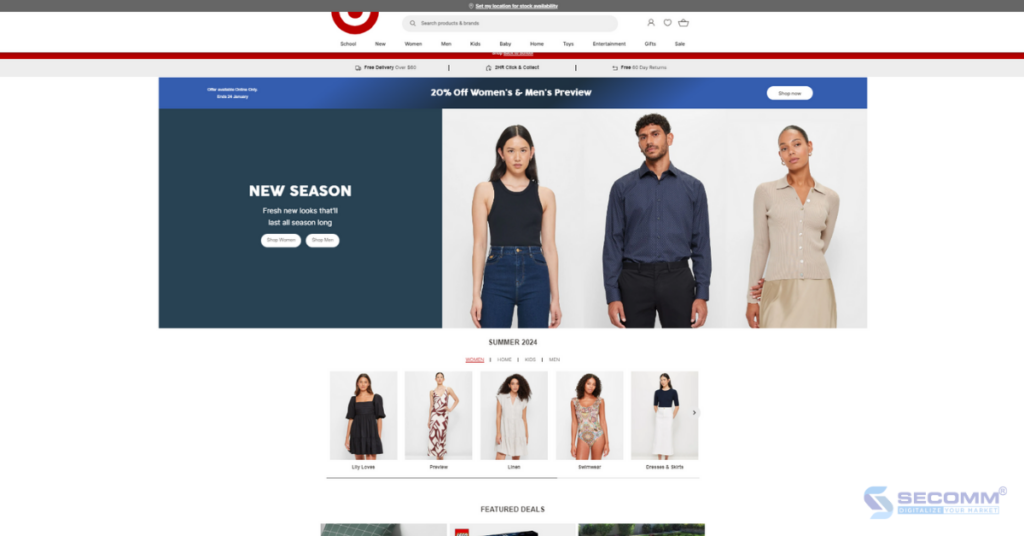
Catch, formerly known as Catch of the Day, is an Australian multi-vendor marketplace well-known for providing substantial deals and discounts across a diverse range of product categories. The online marketplace has introduced a loyalty program named Catch Club, offering members a points-based shopping system for exclusive rewards and special items.
In addition, Catch prioritizes customer service, offering various support channels such as chat, hotline, and email to ensure customers can easily access and seek prompt assistance.
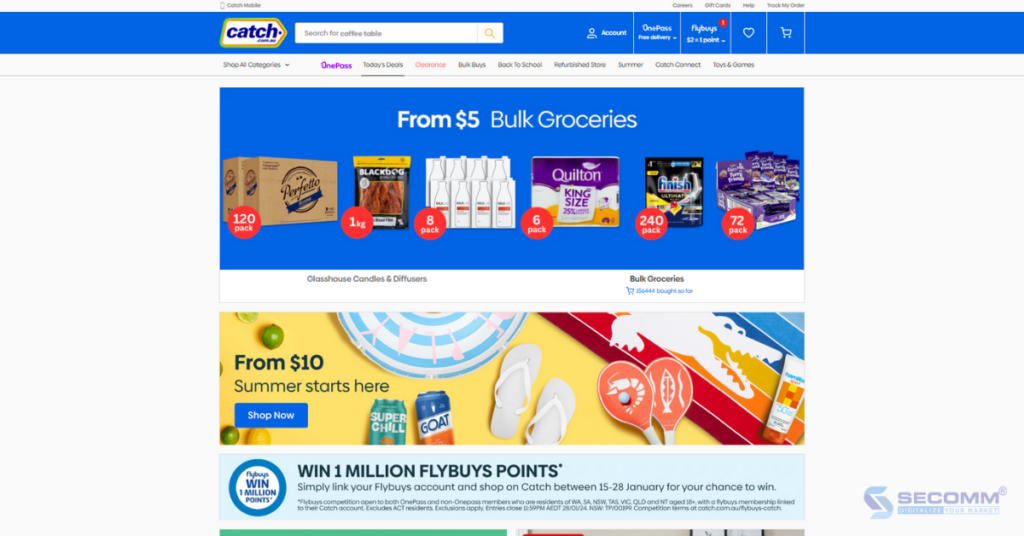
Kogan, headquartered in Australia, is well-known for delivering products and services at competitive prices. Established by Ruslan Kogan in 2006 in Melbourne, Australia, this multi-vendor marketplace initially focused on selling consumer electronics on its website, subsequently diversifying into multiple categories.
Through sensible policies, Kogan has established a fair online marketplace, enabling both businesses and individual sellers to engage in selling, offering buyers an extensive array of options.
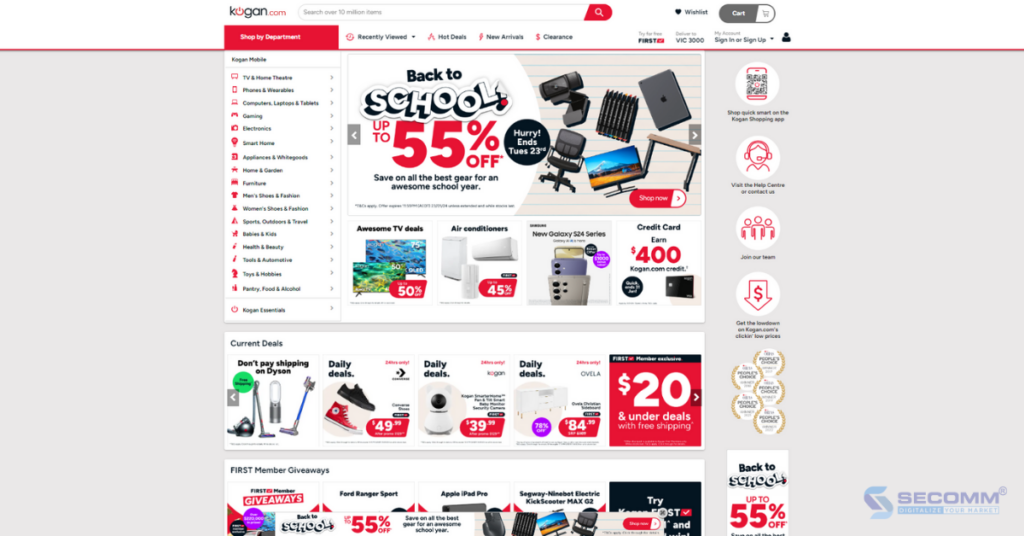
The multi-vendor marketplace MyDeal was established in 2011 in Melbourne, Australia. MyDeal originated as a website specializing in providing discount codes and shopping coupons.
MyDeal offers a diverse range of products, including fashion, household items, electronics, toys, furniture, and many other categories. They continually expand their product offerings to meet consumer needs.
MyDeal regularly creates flash sales, special discounts, and promotional programs to attract customers. With its diversity and attractive discounts, MyDeal has drawn in many consumers in Australia, becoming one of the most popular online marketplaces in the country.
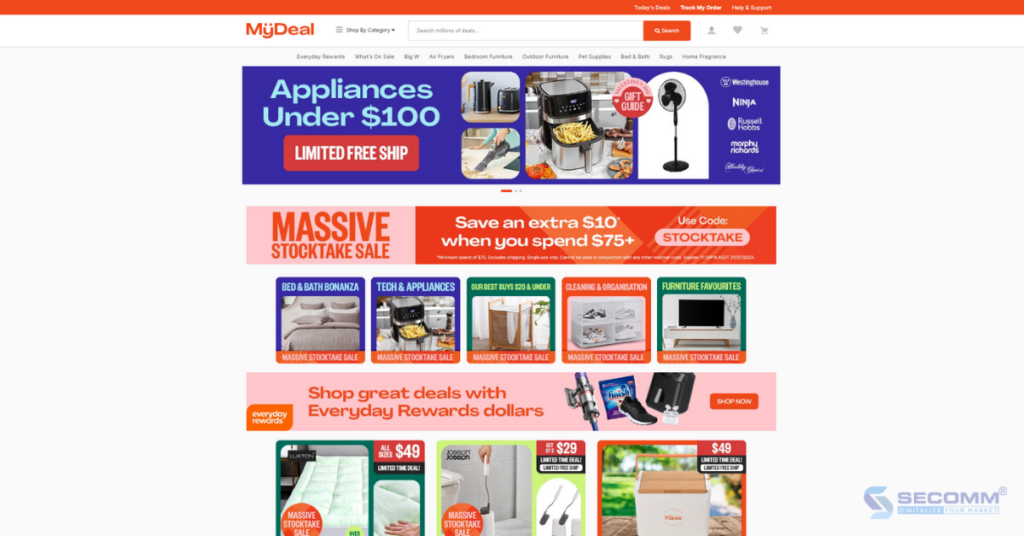
Formerly known as an Australian eCommerce website specializing in consumer electronics, Laybyland has transitioned its business model to become a multi-vendor marketplace. This shift allows numerous individual sellers and businesses to participate in selling their products on the platform, providing buyers with affordable pricing and diverse choices.
Laybyland and SECOMM have been partners for over 10 years, collaborating on various successful eCommerce projects, including the recent Laybyland multi-vendor marketplace. The project primarily utilizes two platforms, Marketplacer and Magento 2, to enhance operational efficiency and optimize the customer user experience.
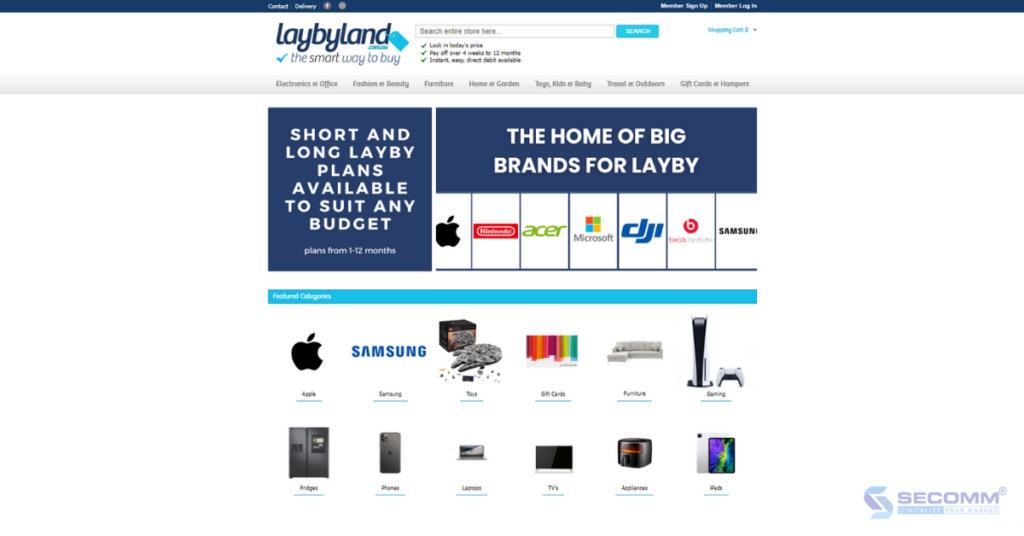
Learn more: The project of Laybyland
Above are the 10 most popular multi-vendor marketplaces in Australia, serving as the ideal online shopping destinations for local consumers.
The eCommerce industry in Australia has witnessed significant growth, with not just the mentioned 10 brands but also numerous other Australian businesses successfully implementing efficient platforms, attracting a wide customer base, and experiencing continuous growth.
If your business is still contemplating whether to establish a multi-vendor marketplace in Australia and how to go about it, feel free to contact or call our hotline at (+84)28 7108 9908 right now!
 2
2
 4,546
4,546
 0
0
 1
1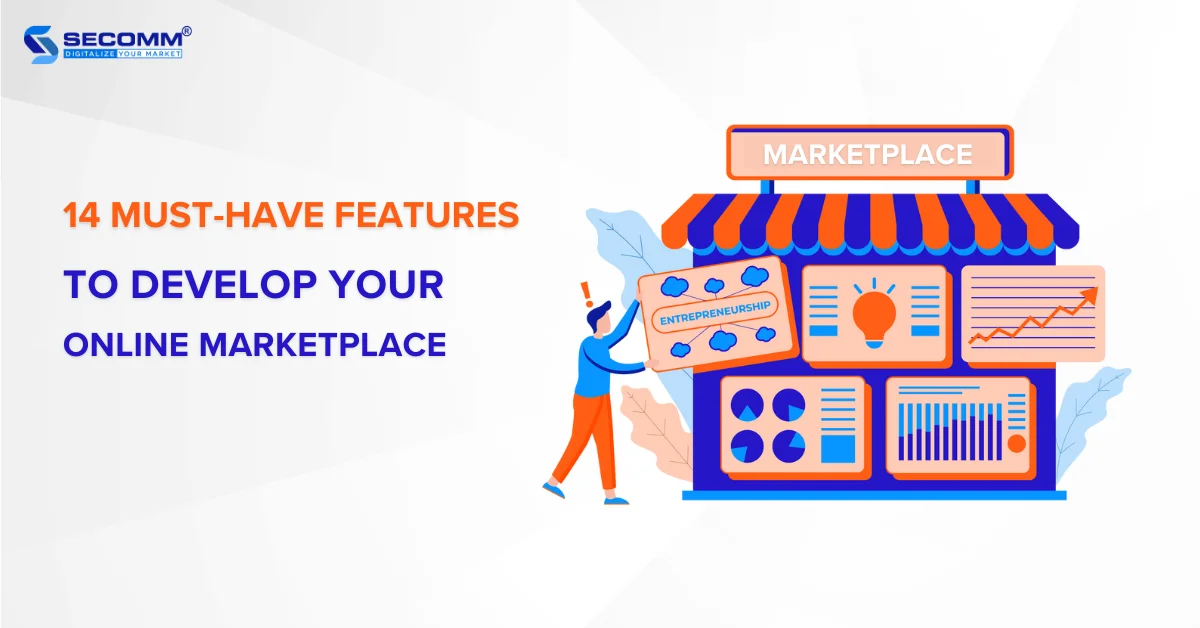
The surge in demand for online shopping via eCommerce marketplaces over recent years has been remarkable. So, it comes as no surprise that numerous businesses are looking for ways to build their own marketplaces to diversify their product offerings and engage with a wide range of customer segments.
Operating an eCommerce marketplace differs significantly from managing an eCommerce website. The key is to ensure that the experience is user-friendly and efficient for all involved parties, including administrators, sellers, and buyers, during both the operational and transactional phases.
Depending on the strategy, scale, budget, market, and target audience, businesses will make suitable adjustments. However, the following online marketplace features continue to be crucial when implementing the majority of eCommerce marketplaces today.

The operator, also known as an administrator or owner of the online marketplace, holds a pivotal role in managing and running the platform. They possess the authority to access and govern all data and carry the responsibility for the platform’s overall performance and growth.
As a result, essential features for operators include:
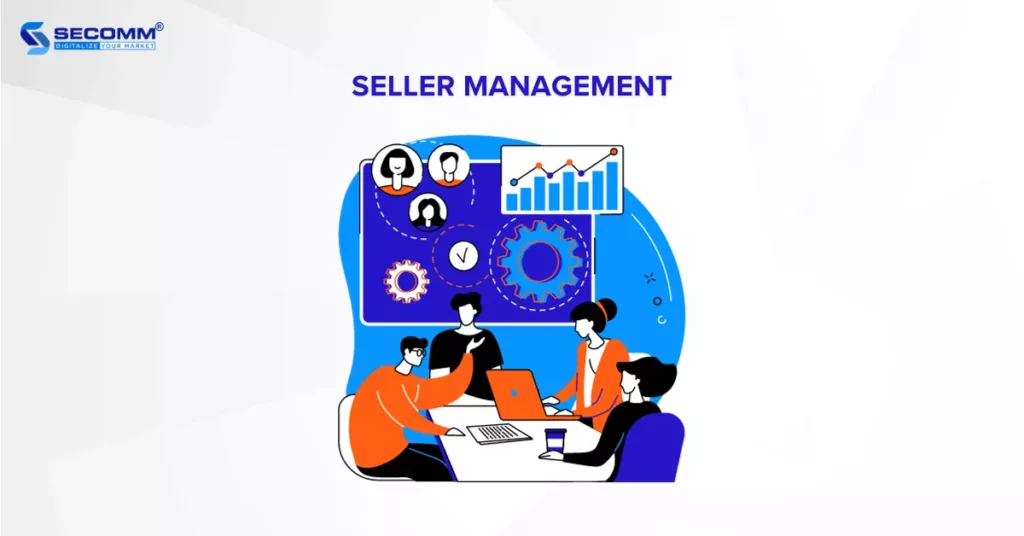
The operator’s role involves helping sellers register on the platform, gather their information, and grant access to tools that aid their business operations. Additionally, other aspects of ‘Managing Sellers’ that businesses should consider include:
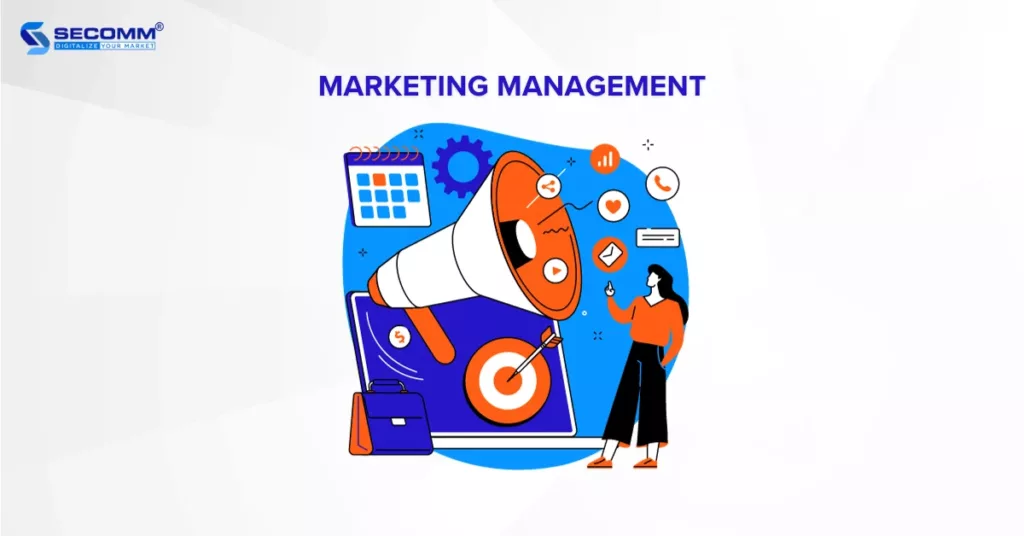
To expand the pool of registered sellers and draw more customers to shop on the online marketplace, operators continually rely on marketing efforts. Some methods include optimizing SEO, leveraging influencer marketing, running targeted advertisements, devising in-platform promotional initiatives, and more.
However, it’s crucial for businesses to possess a set of features and tools to proficiently craft and manage marketing campaigns across multiple channels. This aids in the effective promotion of their marketplaces, the attraction of additional sellers and customers, and the establishment of a distinctive presence within the competitive eCommerce landscape.
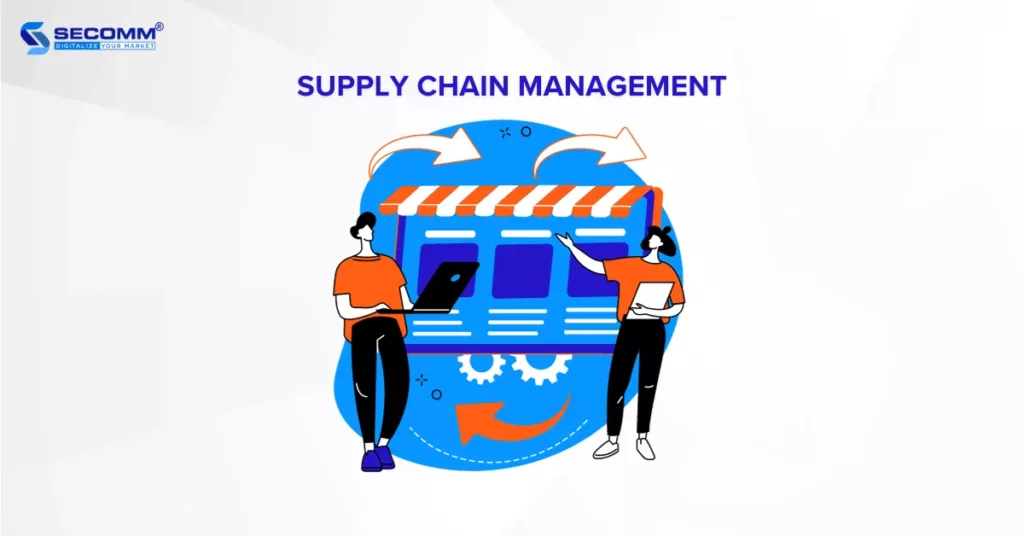
Given the substantial order volume, operators need features that offer them full control of order fulfillment. This includes inventory management, overseeing multiple warehouses, configuring automated workflows for handling and transporting orders between warehouses, and delivering them to end-users.
Plus, to optimize the delivery process, businesses can partner with third-party shipping providers to provide customers with various choices, such as standard, express, or expedited shipping methods.
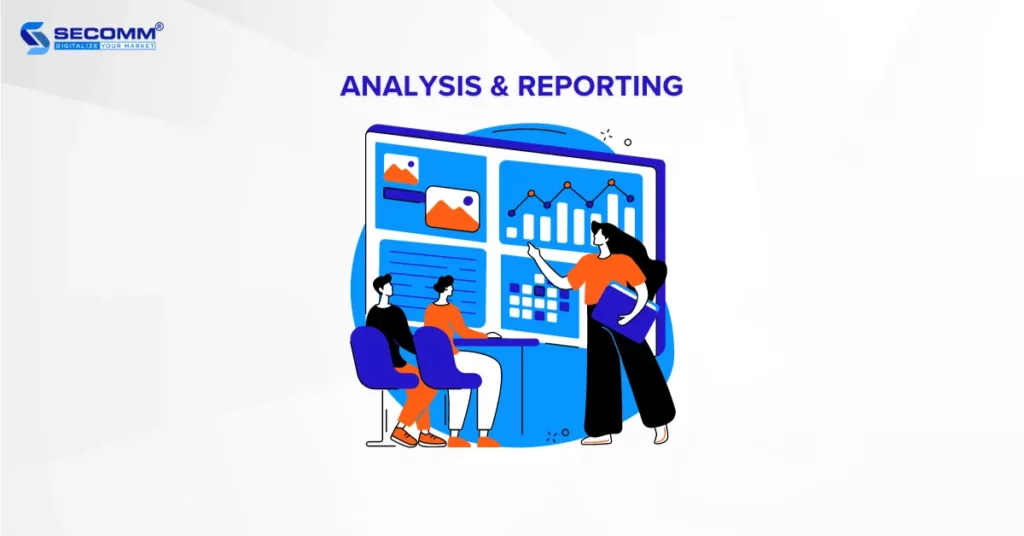
Through comprehensive data analysis and detailed reporting, businesses can gain insights into their overall operations and make informed adjustments. Key data points include:
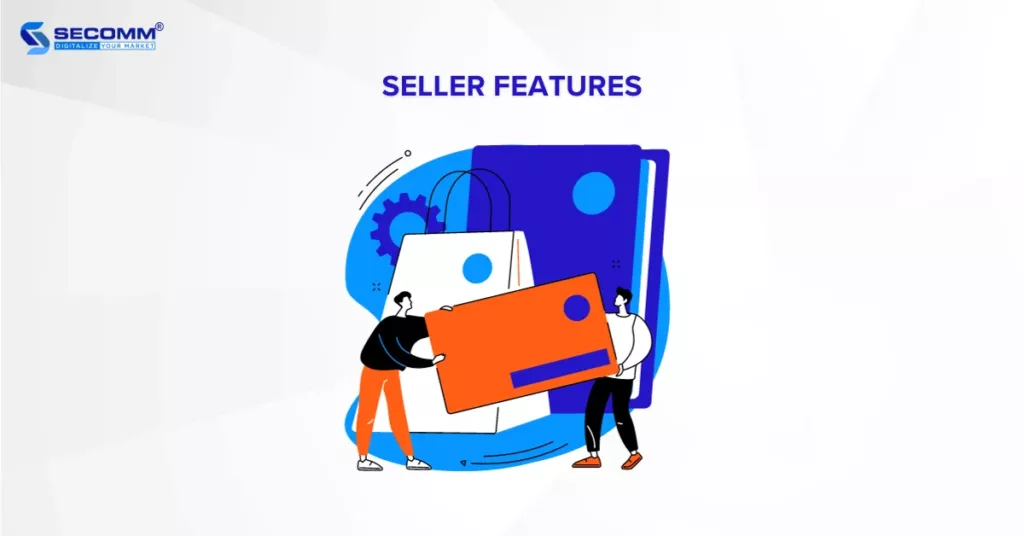
Sellers, also known as suppliers or merchants, are individuals or businesses that offer products or services on the online marketplace. Their responsibility is to manage their operations and optimize sales performance.
Therefore, eCommerce marketplace features for sellers to conduct efficient business operations include:
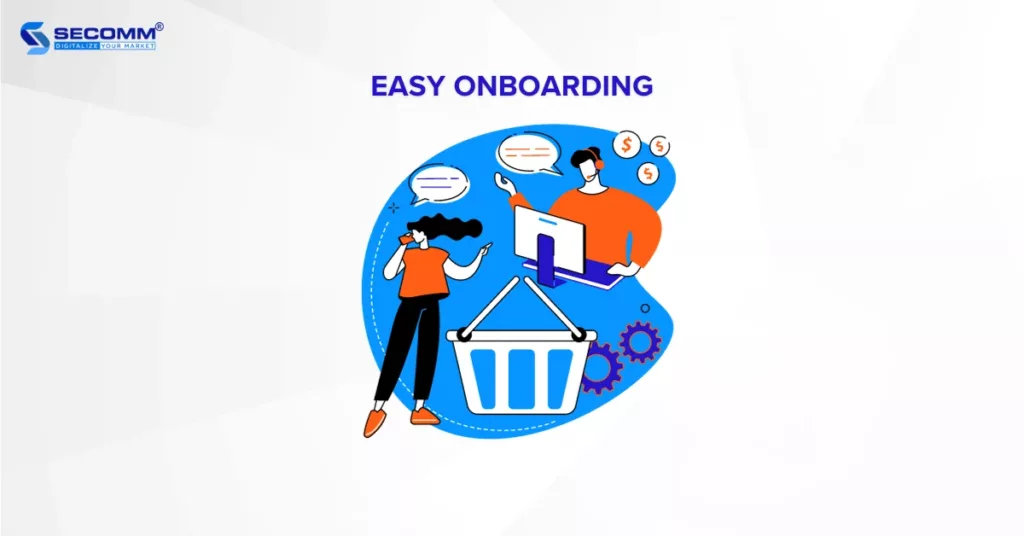
Sellers have many choices in the midst of multiple online marketplaces. So, offering a swift and uncomplicated registration and store setup process is an effective way to attract a wide pool of new sellers to open their stores.
Businesses can offer detailed step-by-step guidance to sellers, from creating an account and verifying their seller identity to decorating their store and listing products. Furthermore, businesses can provide instructional videos, FAQs, and blogs to guide them on optimizing their store, promoting products on the platform, as well as understanding the fees associated with the eCommerce marketplace’s sales policies.
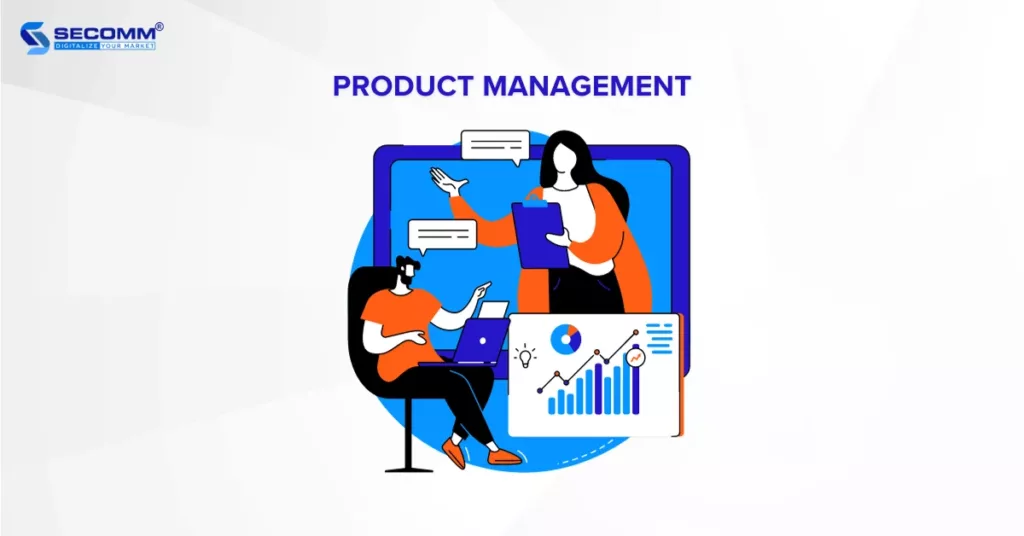
Beyond listing products, helping sellers manage their product catalog effectively on the marketplace is equally important.
This includes tasks like adding and removing products, maintaining high-quality product descriptions, images, and videos, handling product variations and attributes, updating inventory, setting product prices, applying discounts, prompting product reviews, and moderating and verifying reviews based on the platform’s standard.
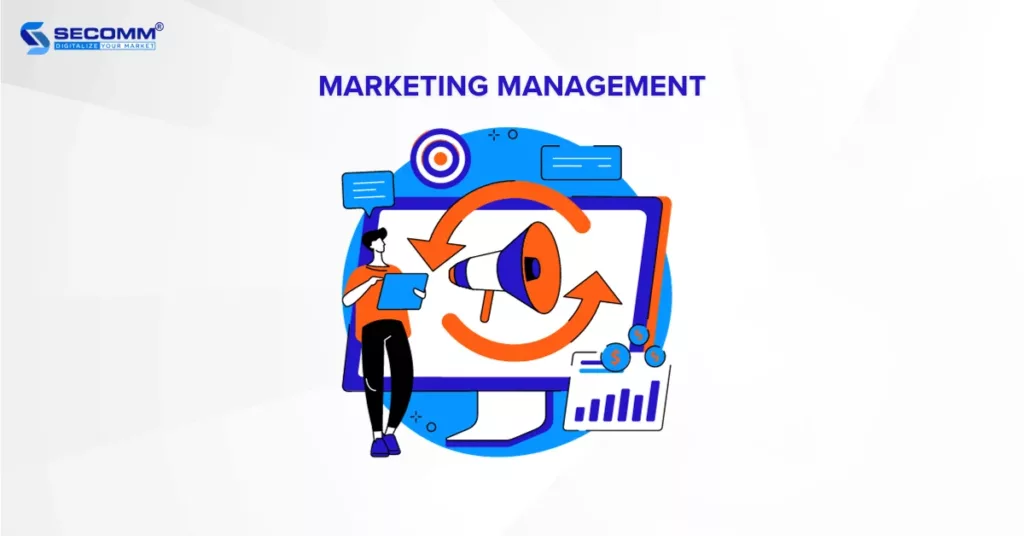
Sellers need tools and features for setting up marketing campaigns to promote their stores and products, driving increased sales. These commonly used marketing tools on online marketplaces include in-site and off-site advertising, promotional messaging, flash sales, bundled deals, shipping discounts or free shipping promotions, creating discount vouchers, live-streaming sales events, and participating in platform-wide promotional activities.
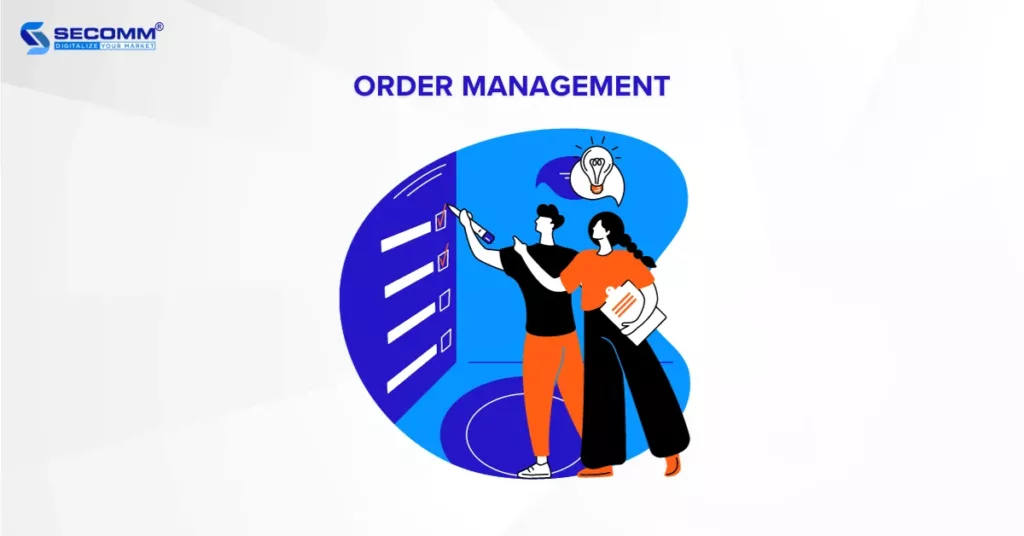
Providing sellers with effective order management capabilities also impacts the customer experience on the eCommerce marketplaces. This means offering sellers features to manage their order lists, track the status of orders, fulfill orders, handle returns, and efficiently address any issues that may arise.

Sellers rely on data analysis and reports to track and manage their business performance on the online marketplace effectively. These reports provide valuable insights for making data-driven decisions and optimizing their operations.
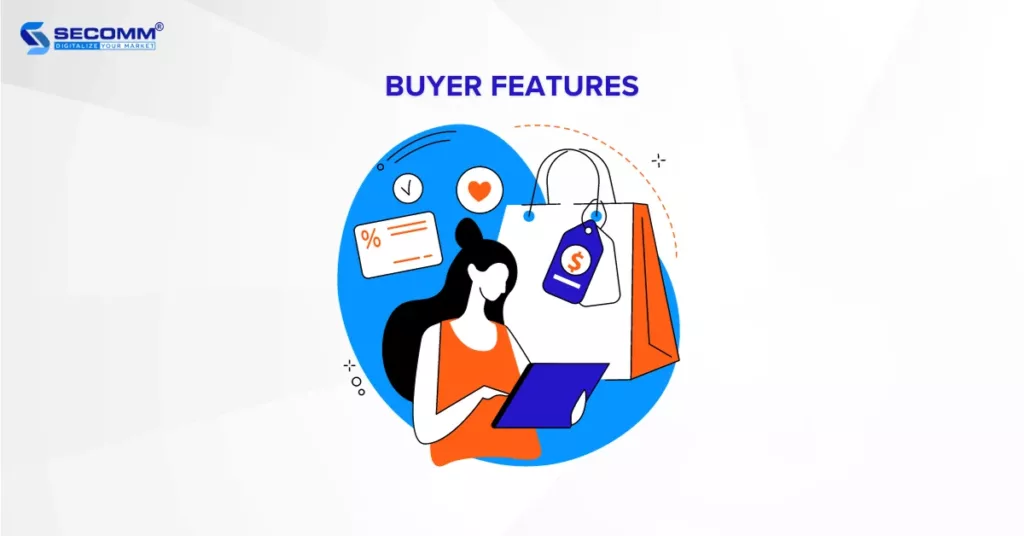
Buyers, also known as customers, refer to individuals or businesses that purchase goods or services from sellers on the eCommerce marketplace. Customers play a crucial role in driving the success of the marketplace. Therefore, feature development is focused on enriching the shopping experience.
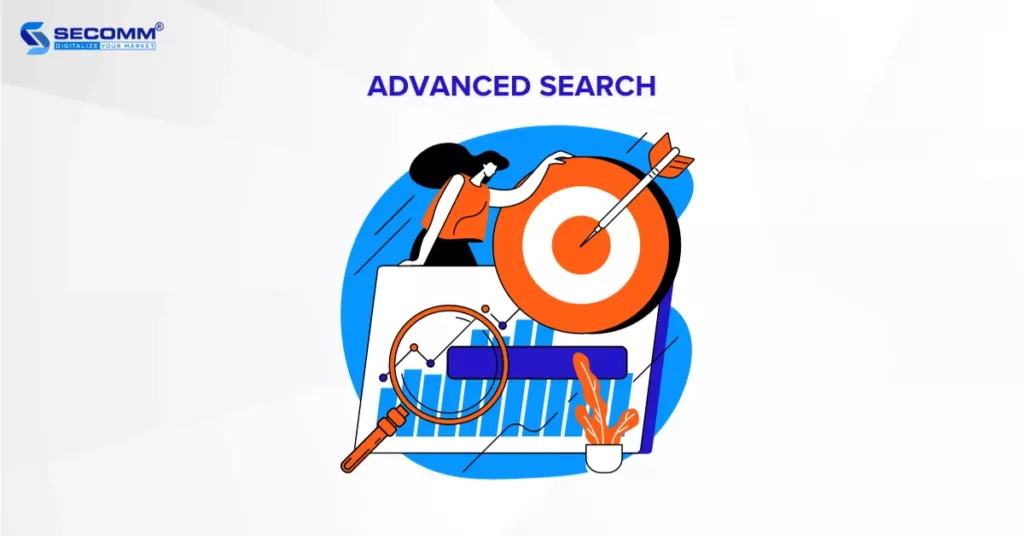
When accessing an eCommerce marketplace, the first thing most users do is use the search bar to find the information and products they desire. However, the product catalog on marketplaces is extensive and can be overwhelming for buyers.
Therefore, beyond maintaining well-structured and organized product categories, businesses should offer advanced search capabilities to simplify and enhance the customer’s product discovery experience process. Common advanced search options include filtering, image-based, or voice-based search (optimized for mobile devices).
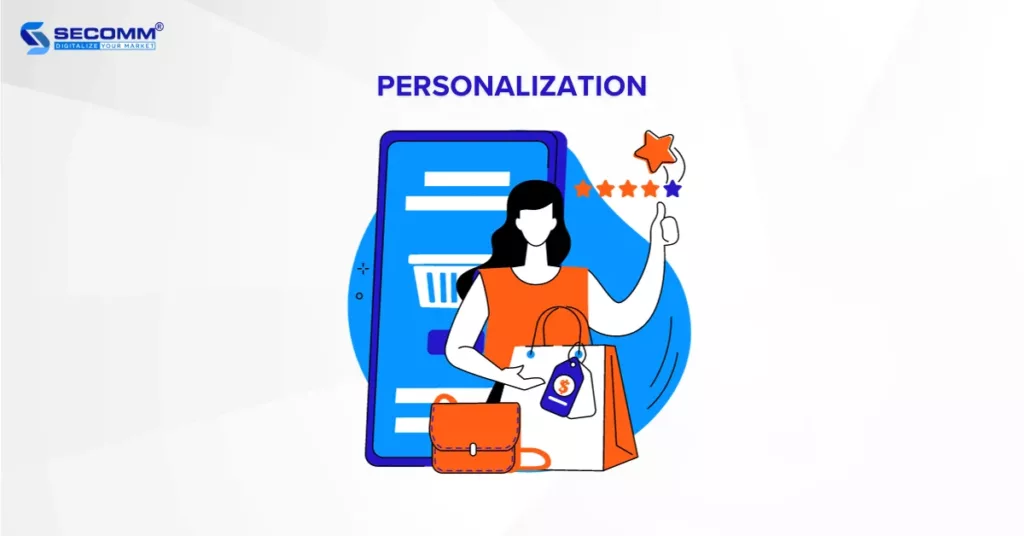
Features like product recommendations, push notifications, personalized content, and customer service tailored to individual shopping behavior and preferences are crucial for enhancing the eCommerce experience. Studies have revealed that 74% of customers feel frustrated when encountering non-personalized shopping experiences on websites.
By integrating advanced search capabilities with personalization, companies can offer a more enriching user experience, leading to greater satisfaction, higher levels of engagement, and increased customer retention. This transforms their marketplace into an ideal shopping destination for buyers.
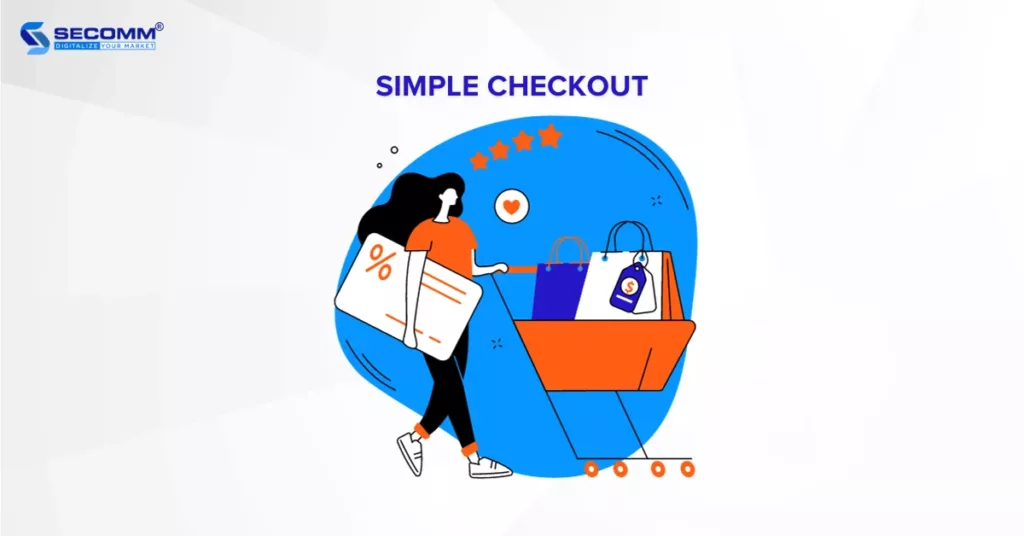
Out of the various reasons for cart abandonment, issues related to long and complicated checkout procedures make up 17%, according to Baymard. it is essential for businesses to streamline the payment experience for customers, removing unnecessary steps, offering a transparent payment process, or implementing a one-page checkout.
Moreover, businesses can diversify their payment methods to suit their target markets, including options such as Cash on Delivery (COD), credit card payments, eWallets, and buy now, pay later options.
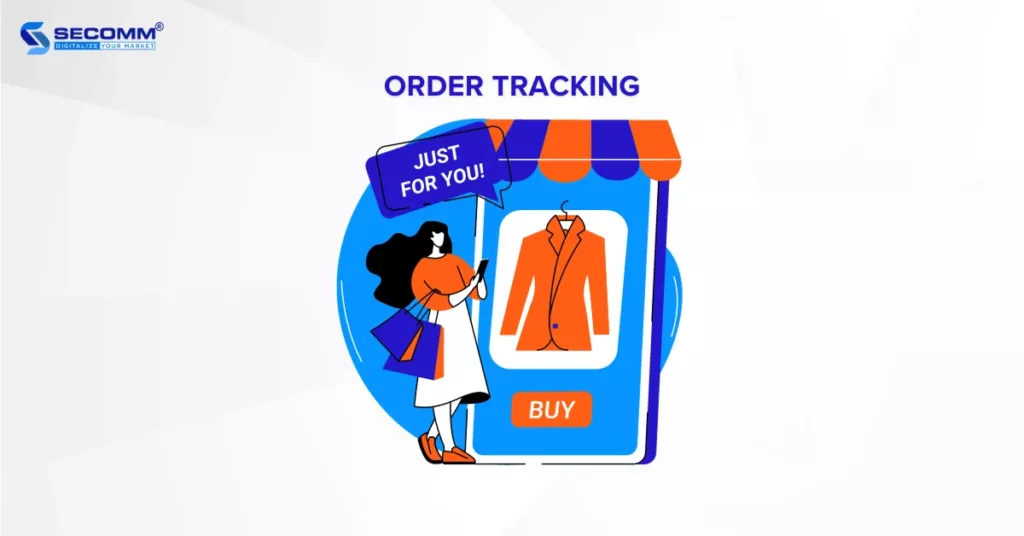
To boost the trust of buyers and sellers in the eCommerce platform, it is crucial for businesses to offer real-time order tracking and status-checking capabilities.
Buyers can track their orders through the marketplace’s mobile app or website by using their unique order IDs. This way, both the seller and the buyer can communicate promptly if any issues arise with the order.
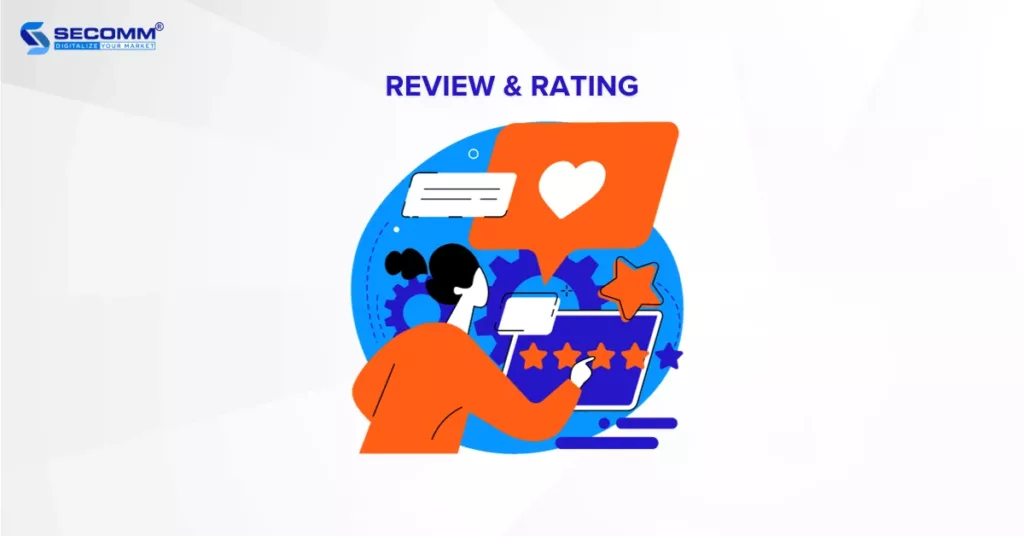
With a diverse range of product choices offered by different sellers, customers may find it challenging to make purchasing decisions when they lack trust in either the product or the seller. Hence, the review and rating feature is essential for building trust and expediting decisions.
The review feature allows buyers who have made purchases to leave comments, reviews, and ratings for a product, customer support, and product packaging, regardless of the seller.
Whether these reviews and ratings are positive or negative, they have a significant impact on a buyer’s decision-making process. Therefore, this serves as a motivation for sellers to enhance the quality of their products and services and for the eCommerce marketplace owner to provide an improved user experience.
Above are the 14 essential features for operators, sellers, and buyers that businesses should keep in mind when building an online marketplace. With many years of eCommerce implementation experience for numerous clients in various countries worldwide, SECOMM has gathered valuable insights to boost the development and operation of your business’s marketplace swiftly and effectively.
Contact or call SECOMM’s hotline (02871089908) today for a free consultation.
 2
2
 11,727
11,727
 0
0
 1
1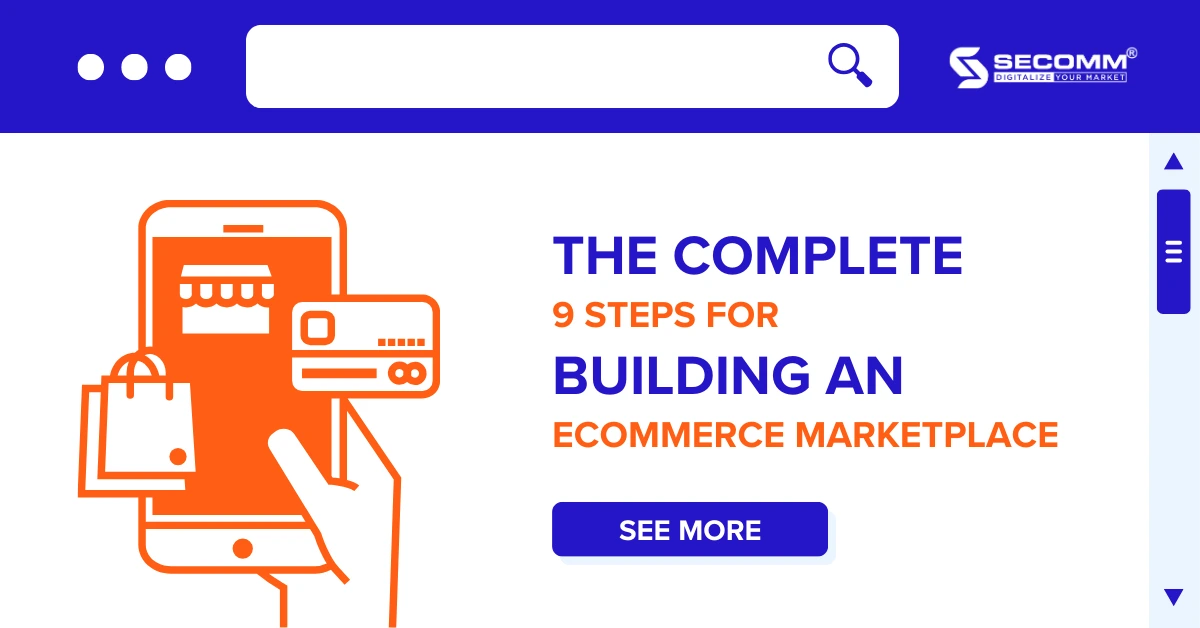
Unlike building eCommerce websites for simpler models like B2C or B2B, implementing an online marketplace requires a higher level of technical knowledge, programming skills, database management, system administration, and more.
In this article, SECOMM will share the essential steps for successfully developing an eCommerce marketplace, from market research and business planning to designing an appealing user interface, developing functional systems, and more.
Market research and business planning are essential and indispensable initial steps in starting an eCommerce marketplace or any business operation.
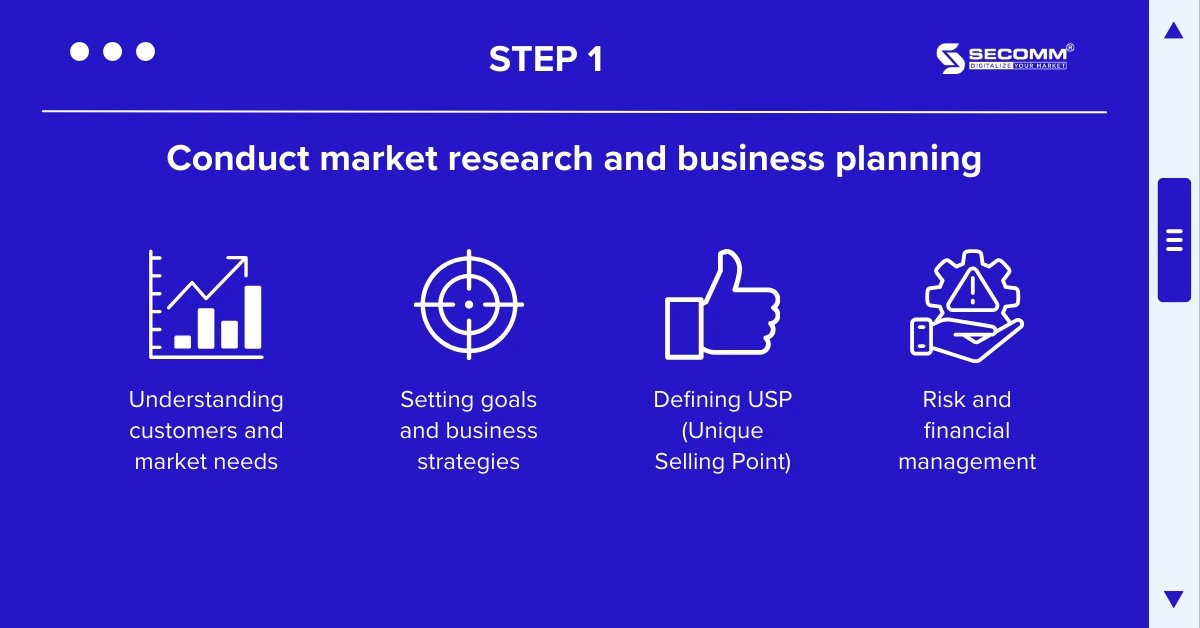
Here are some considerations for businesses when undertaking these activities:
The eCommerce platform is a crucial element in the process of building an online marketplace. If the right choice is not made from the beginning, businesses may find themselves entangled in the whirlpool of technology when implementing their marketplace.
Typically, there are two types of eCommerce platforms for businesses to choose from: SaaS and Open Source.
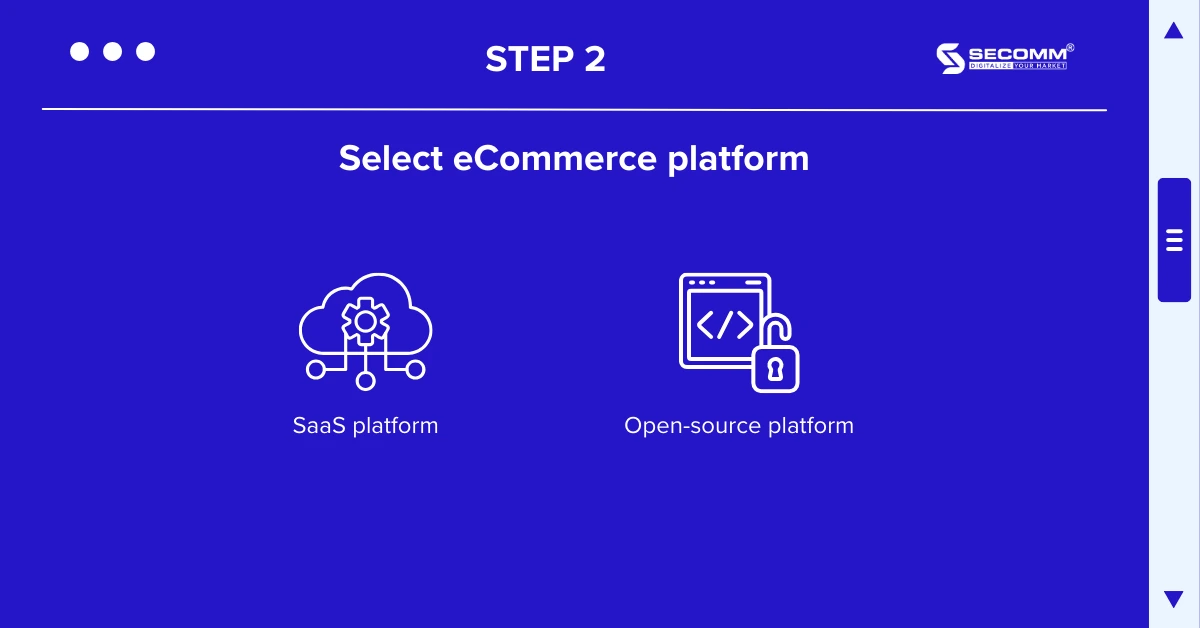
SaaS (Software as a Service) eCommerce platforms are a software distribution model for building websites.
In this model, data is stored on the provider’s server, and the platform is responsible for handling technical aspects for businesses. Some popular SaaS platforms today include Haravan, Shopify, BigCommerce, and more.
An Open Source platform, or open-source software, is software with publicly available source code that anyone can use for free. Open-source platforms are an optimal choice for businesses looking to develop complex eCommerce systems, especially tailored to the specific needs of an online marketplace.
Prominent examples of Open Source online marketplaces include Magento, WooCommerce (a plugin for WordPress), OpenCart, and more.
Each platform type has its own set of advantages and disadvantages. Therefore, businesses should either have an in-house team or collaborate with an experienced and highly skilled eCommerce marketplace development agency to effectively advise on the selection, development, and operation of the chosen platform.
The initial decision regarding resource allocation for starting an eCommerce marketplace system has a profound impact on a company’s early business direction. Companies can choose to either collaborate with specialised development firms or establish their own in-house teams.
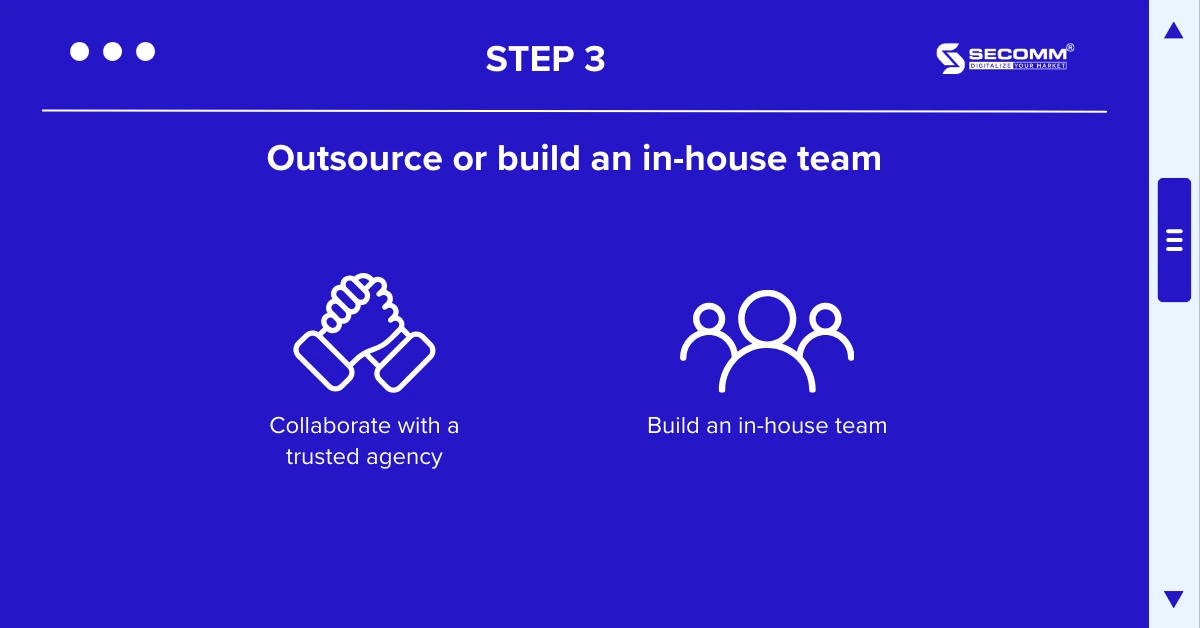
Opting for an in-house team entails investing time and budget into the recruitment and training of staff. However, it provides effective resource management, enabling businesses to adapt and develop the online marketplace system in alignment with their original vision.
Alternatively, when companies decide to seek external partners, they need to collaborate with various firms to identify the most reputable one. However, upon finding a partner with extensive practical experience in marketplaces across multiple platforms, businesses benefit from consultations and a multitude of solutions from diverse perspectives even before system development begins.
Moreover, these firms possess a wealth of experience in promptly addressing emerging issues during system development and operation. This not only ensures that the requirements are met as anticipated but also facilitates valuable knowledge and experience exchange among all parties involved.
The User Interface (UI) and User Experience (UX) are often considered two inseparable aspects in the process of designing the interface for an eCommerce marketplace.

Here are the key steps in the UI/UX design process:
Starting from business requirements, the technical team will build the system architecture for the eCommerce marketplace based on the appropriate technology framework or platform. Various architectures can be used, such as three-tier architecture, microservices architecture, hybrid architecture, headless architecture, etc. Each type of architecture has its own advantages and limitations, so businesses need to carefully consider and work with experts on the team or partners to choose the most suitable system architecture for each stage.
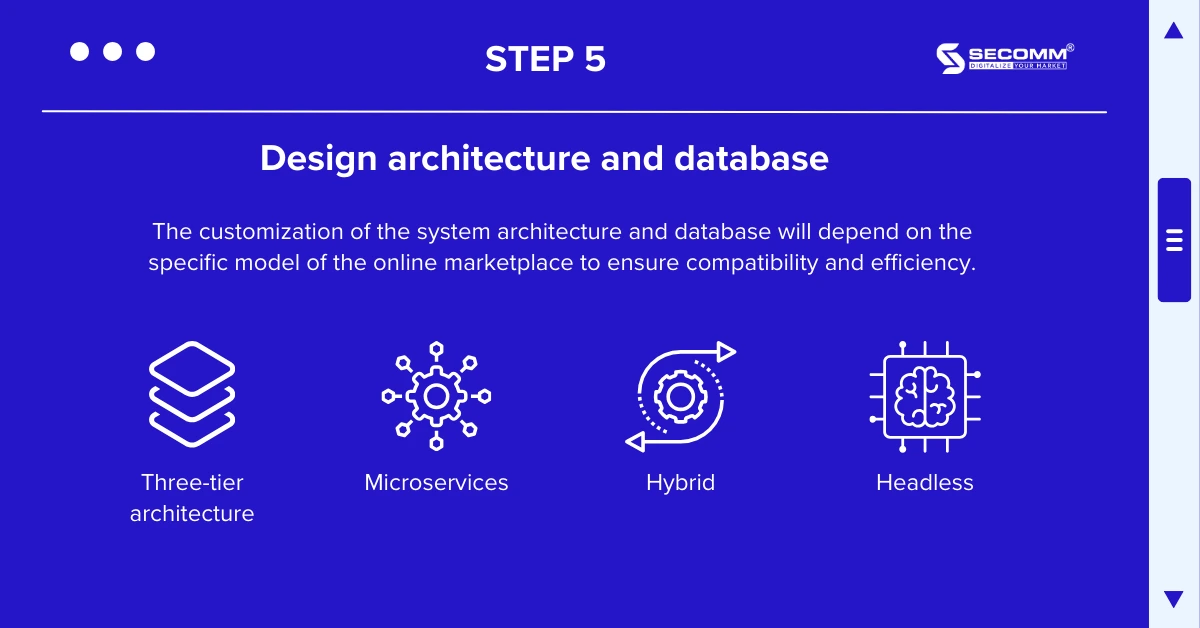
Another equally important next step is to establish security and data management. Businesses need to define security measures to protect user data, payment information, and other critical data. Ensure that data is encrypted and transmitted securely via an SSL connection. Implement data protection measures such as access control, user authentication, data encryption, and data integrity checks.
Depending on the operating model of the marketplace, system and database design may need to be customized to be suitable and effective.
After completing the essential functional systems, businesses should continue to develop specific features for their online marketplace, such as:
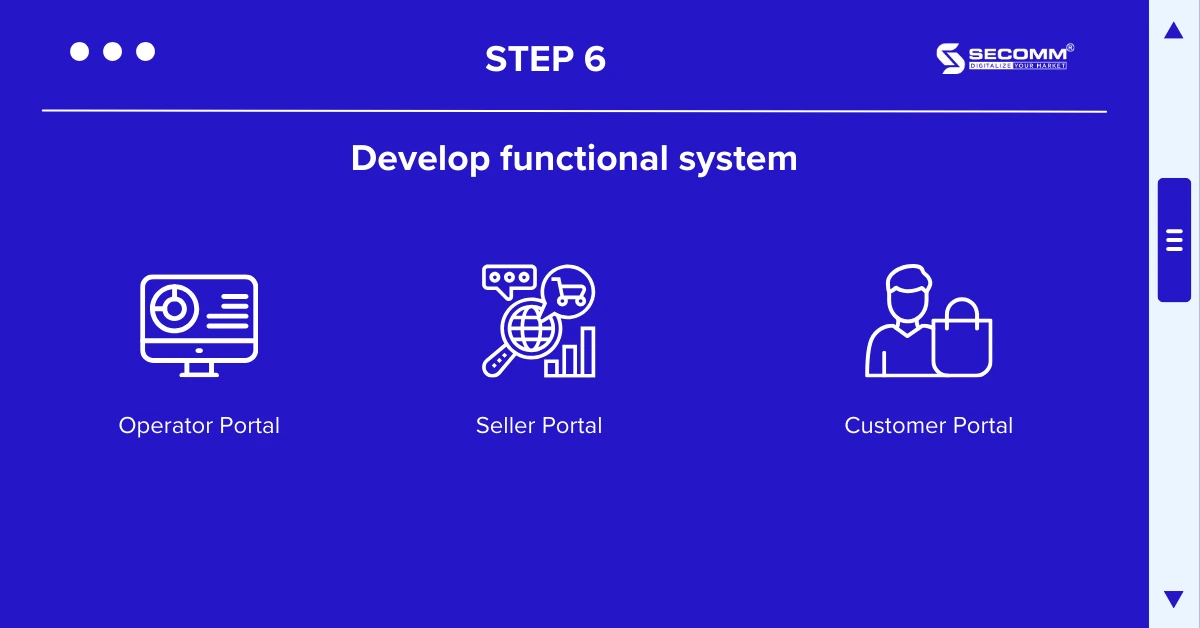
Operator Portal: Full control of platform information, including seller management, product categorization, customer segments, supply chain management, ad content control, and more.
Seller Portal: Sellers self-manage their presence in the marketplace, including product listings, orders, and activities, etc
Customer Portal: Allow users to perform and manage basic information such as phone numbers, email addresses, delivery addresses, adjust payment options, request quotes, manage shopping lists, check order status, etc.
Whether you’re building an in-house team or enlisting the services of external development agencies, the quality testing phase of a project holds immense significance. This critical stage is where businesses validate that the system functions as expected and complies with the initial requirements.
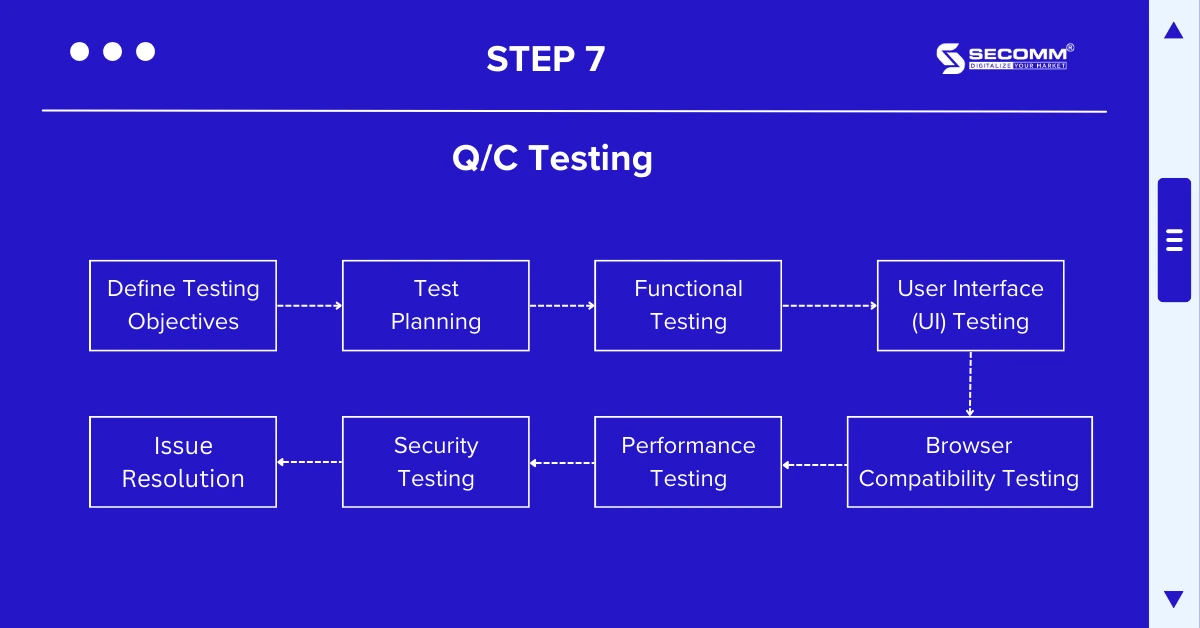
Step 1: Define Testing Objectives
Identify the objectives and scope of the testing process. Set specific criteria and requirements that the business wants to verify to ensure the platform operates accurately and meets the specified requirements.
Step 2: Test Planning
Determine a detailed test plan, including test cases, scenarios, and data. Identify the resources, timeline, and scope of the testing phases.
Step 3: Functional Testing
Verify all website functions to ensure they are working correctly as expected. If the business’s website supports multiple languages and regions, it should also verify compatibility and display of each feature in different geographical areas.
Step 4: User Interface (UI) Testing
Ensure the interface is designed beautifully and user-friendly. Evaluate information display, buttons, links, and user experience on various devices, including mobile and tablet.
Step 5: Browser Compatibility Testing
Test the website on popular browsers such as Google Chrome, Mozilla Firefox, Safari, and Microsoft Edge to ensure compatibility and correct display on all platforms.
Step 6: Performance Testing
Assess website performance, including page load speed, concurrent processing, and scalability. Ensure the website operates smoothly and can handle the expected traffic load.
Step 7: Security Testing
Examine the platform’s security by testing intrusion potential, data security, and user authentication. Verify security methods such as SSL, data encryption, and security certificates.
Step 8: Issue Resolution
Document and track any errors and issues that arise during testing. Identify the root causes, rectify the errors, and retest until the testing process is approved, and the entire system is ready for go-live and operation.
Go-live is the final stage in the process of starting an eCommerce marketplace when the system is officially launched and becomes operational.
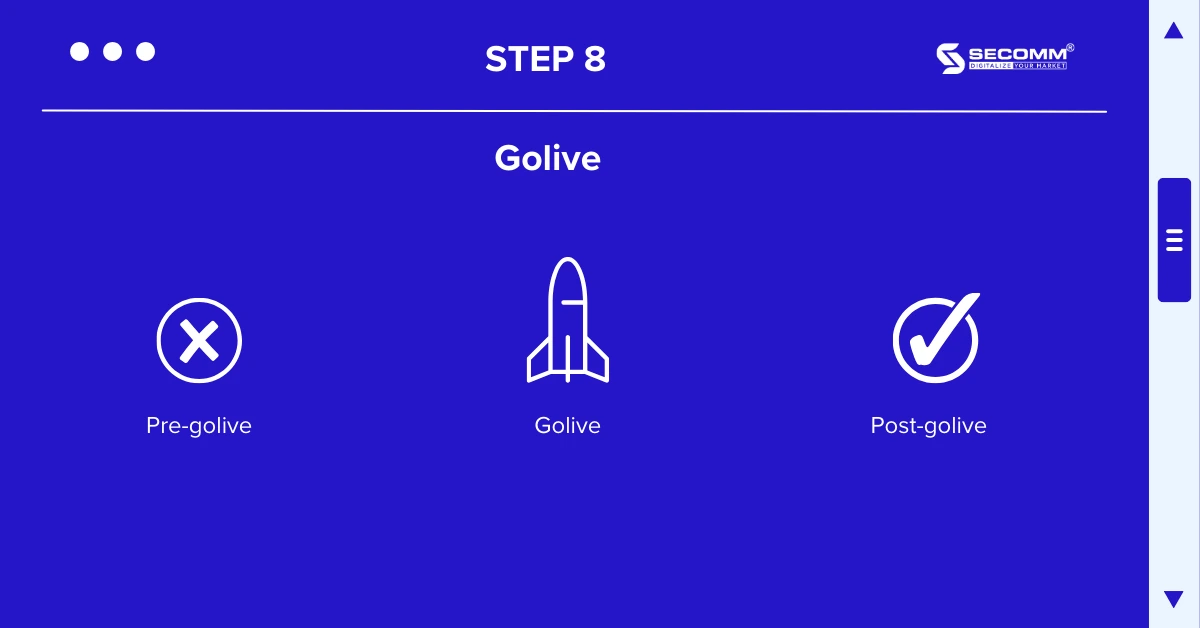
To ensure a successful go-live process, businesses should prepare a checklist known as the Go-live checklist. This is a list of tasks that the deployment team needs to perform to prepare the system for go-live. The checklist includes task items, responsible individuals, status, and how they affect the system.
Regularly updating the system is important for businesses to adapt to the ever-changing customer needs, improve customer experience, stay abreast of emerging technology trends, enhance competitiveness, and more. Moreover, continuous bug fixes and security patch updates enhance the brand’s credibility, safeguard users from internet threats, and so on.
Moreover, the development of new features empowers businesses to capitalize on market opportunities and scale their operations more professionally. For example, after a period of operation and accumulating a specific customer base, businesses can introduce features tailored to loyal customers.
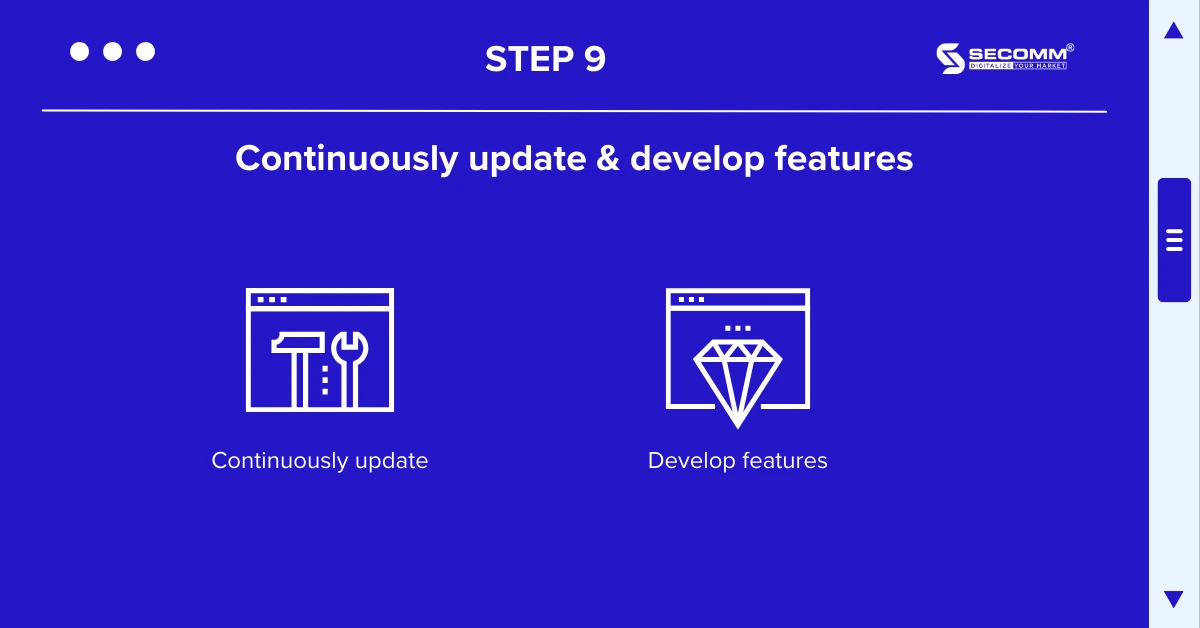
Running a thriving marketplace involves a multitude of factors, such as the business model, financial capabilities, and building strategic partnerships with diverse brands. However, a well-functioning eCommerce platform with high performance plays a vital role in the path to success. The journey of marketplace development is anything but straightforward. It requires substantial investments of time and resources for thorough research and the seamless alignment of solutions with each development phase.
Recognizing the challenges and hurdles that businesses face during the process of starting their eCommerce marketplace, feel free to contact or call SECOMM directly at (02871089908) for a free consultation.
 2
2
 15,697
15,697
 0
0
 1
1Subscribe to get the latest eBook!
Hotline